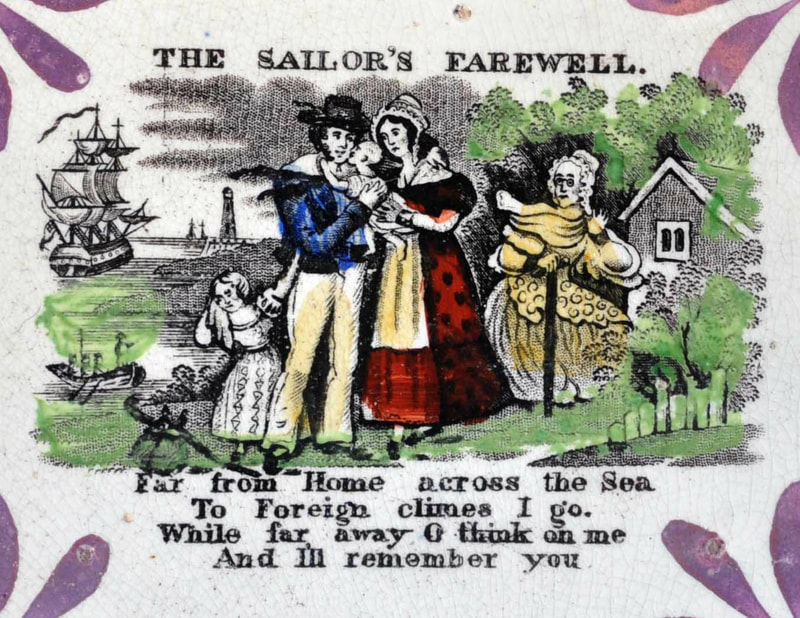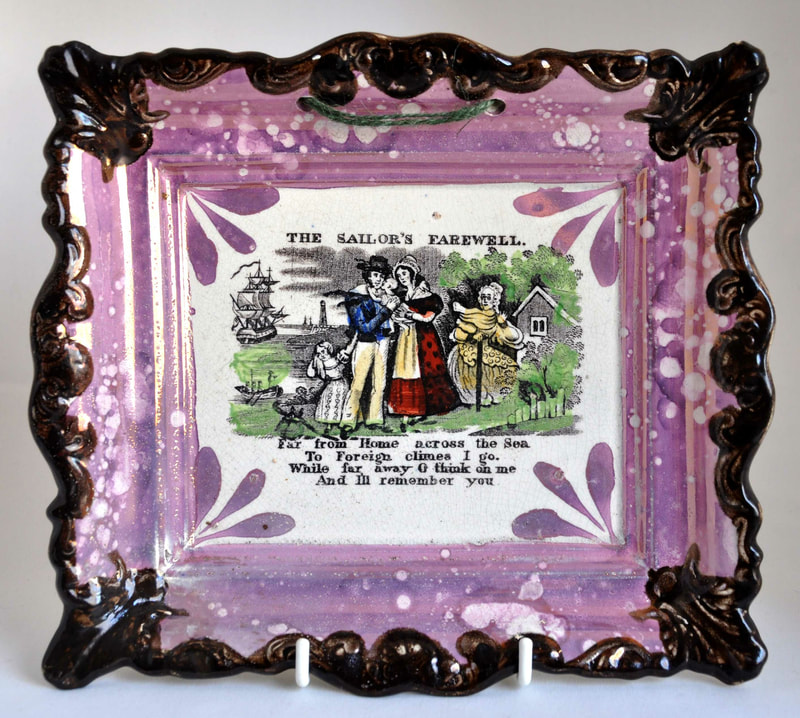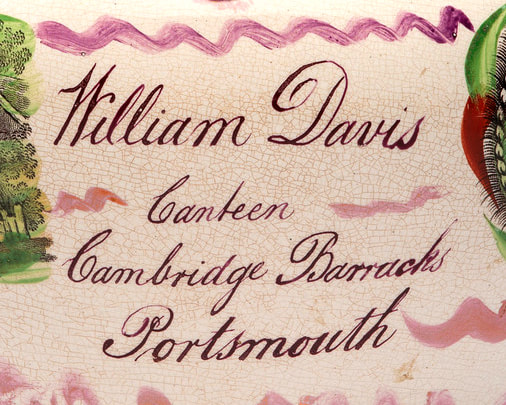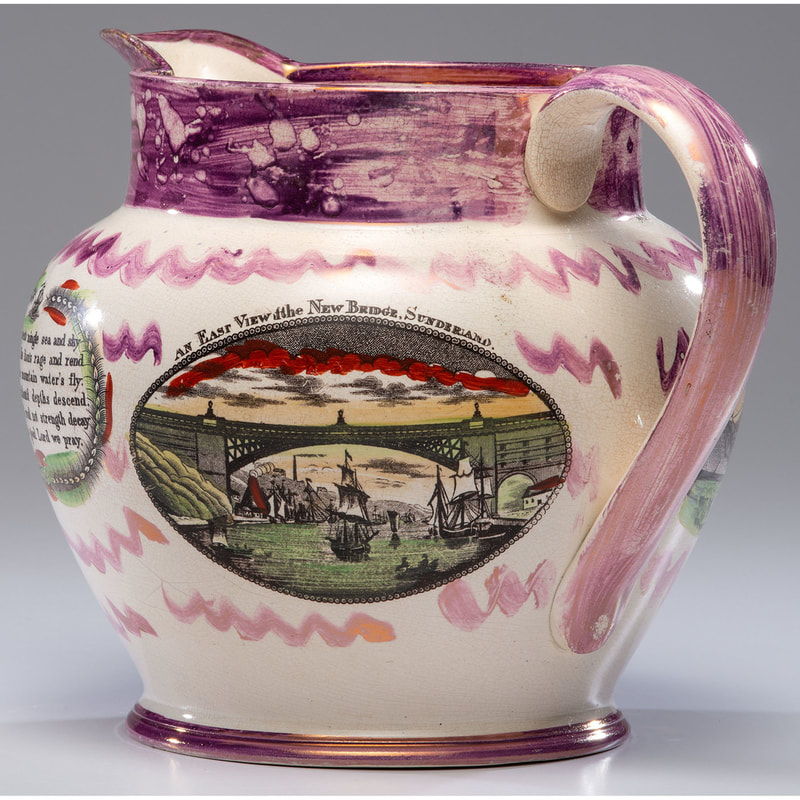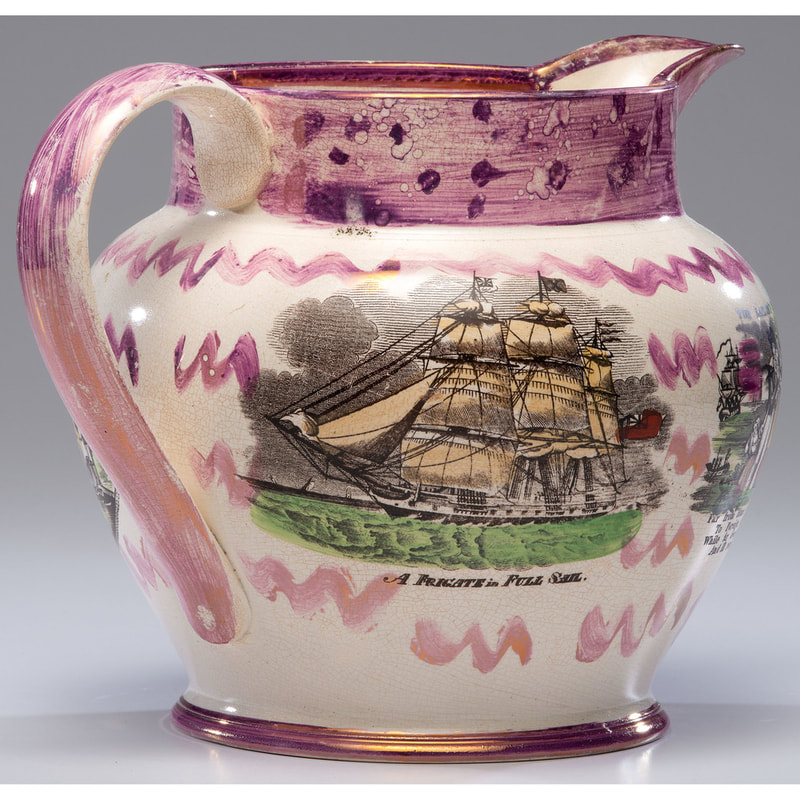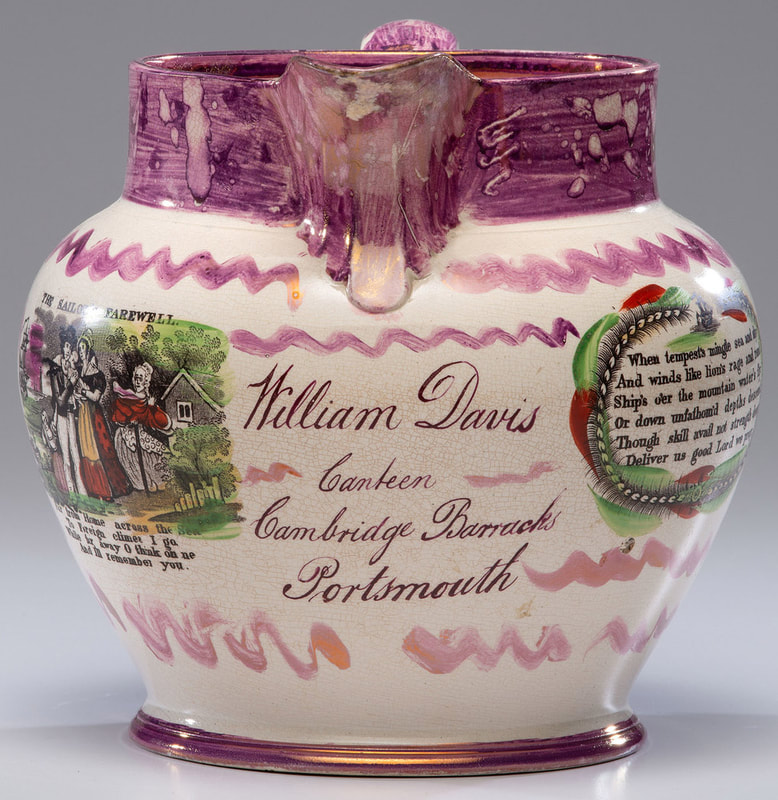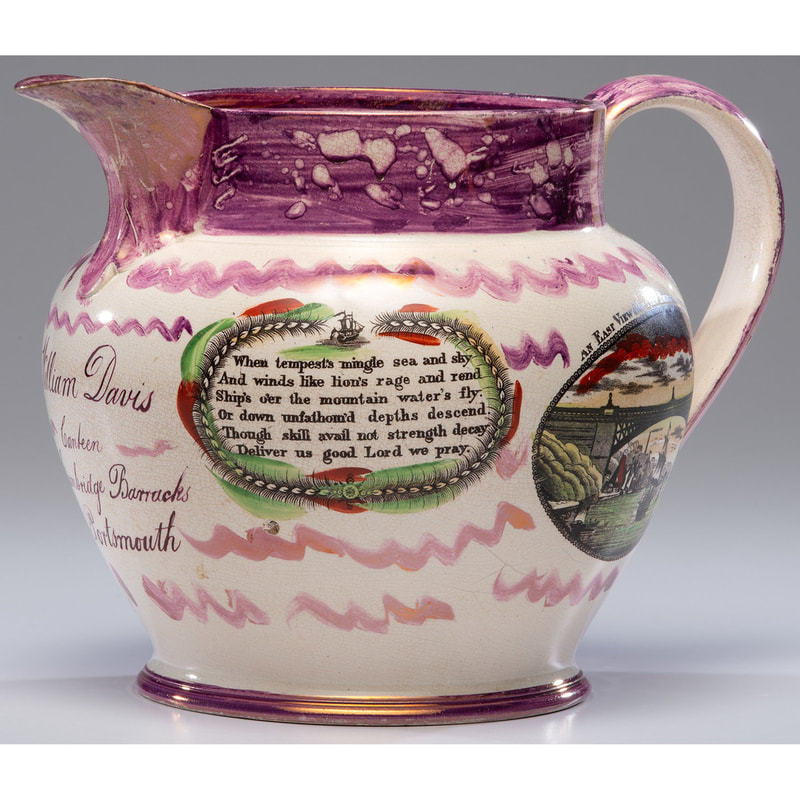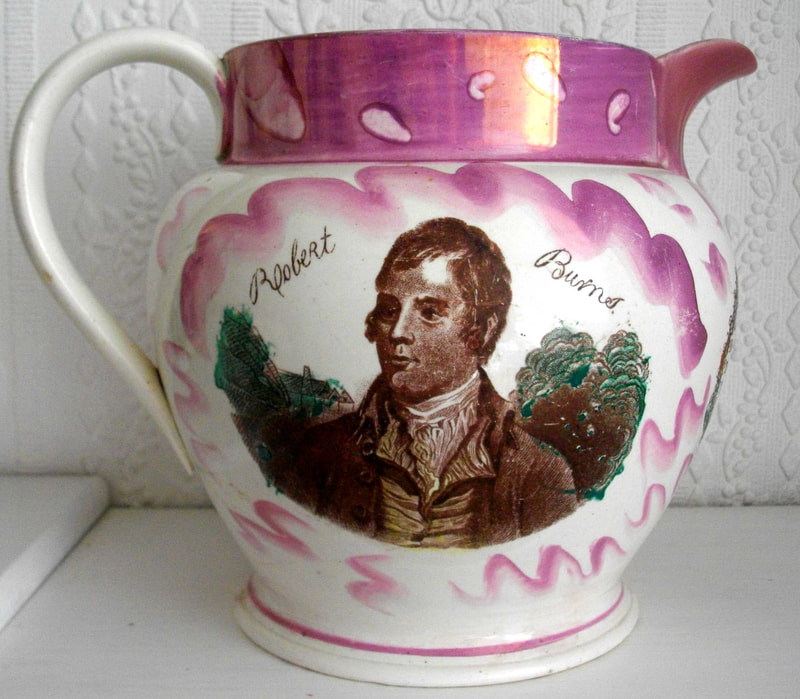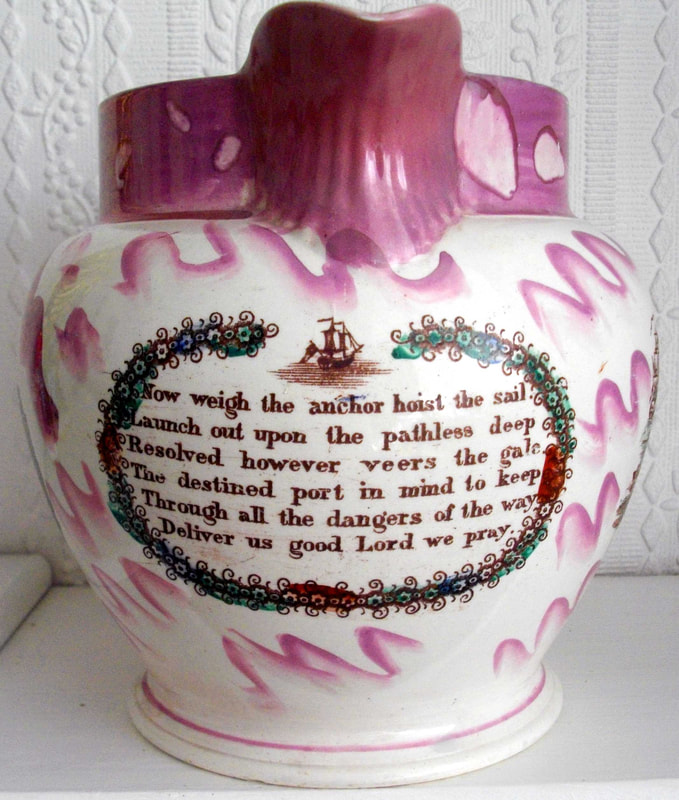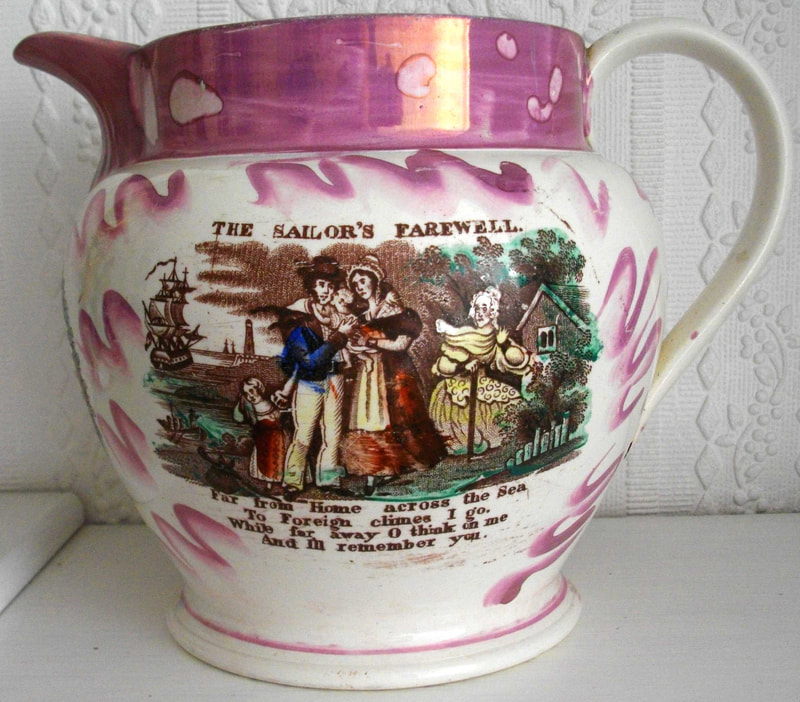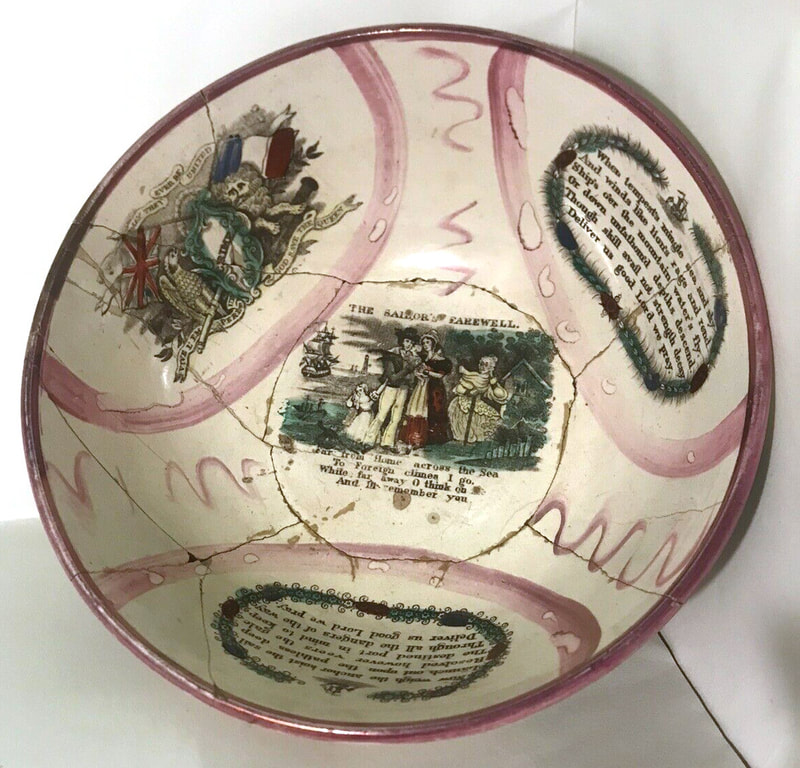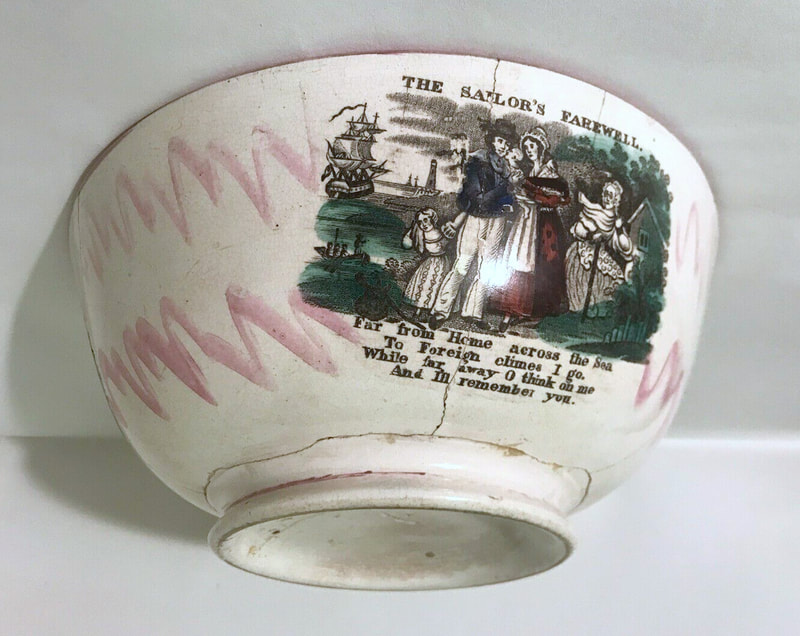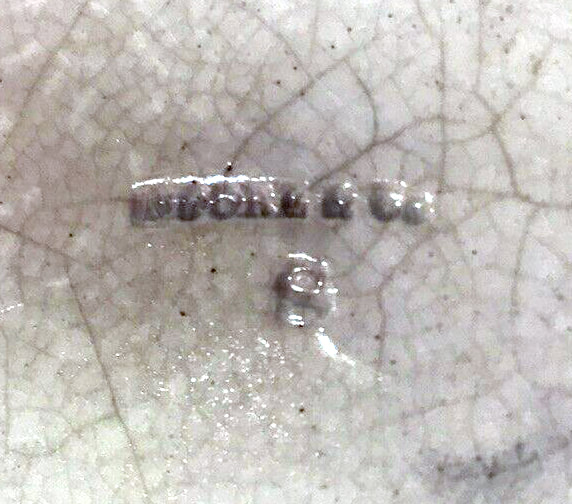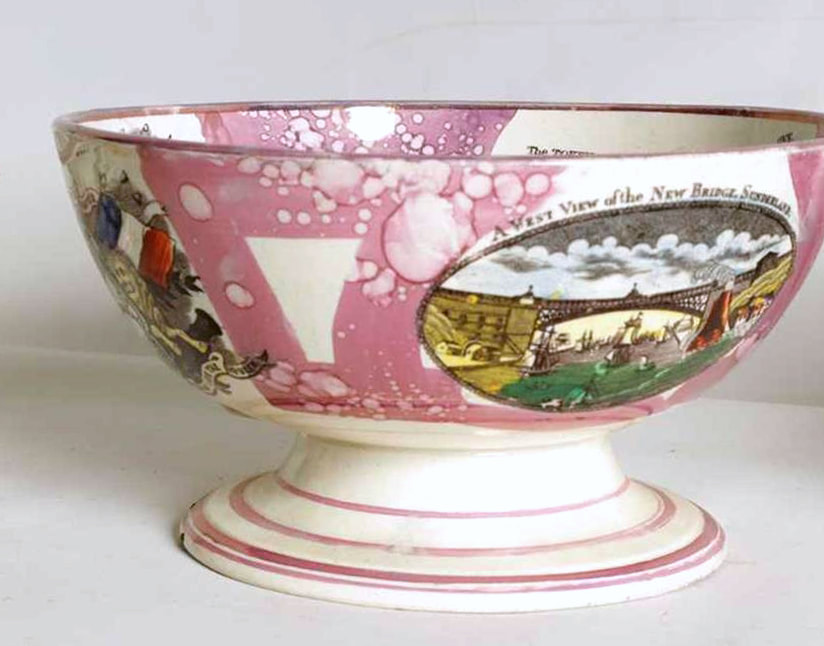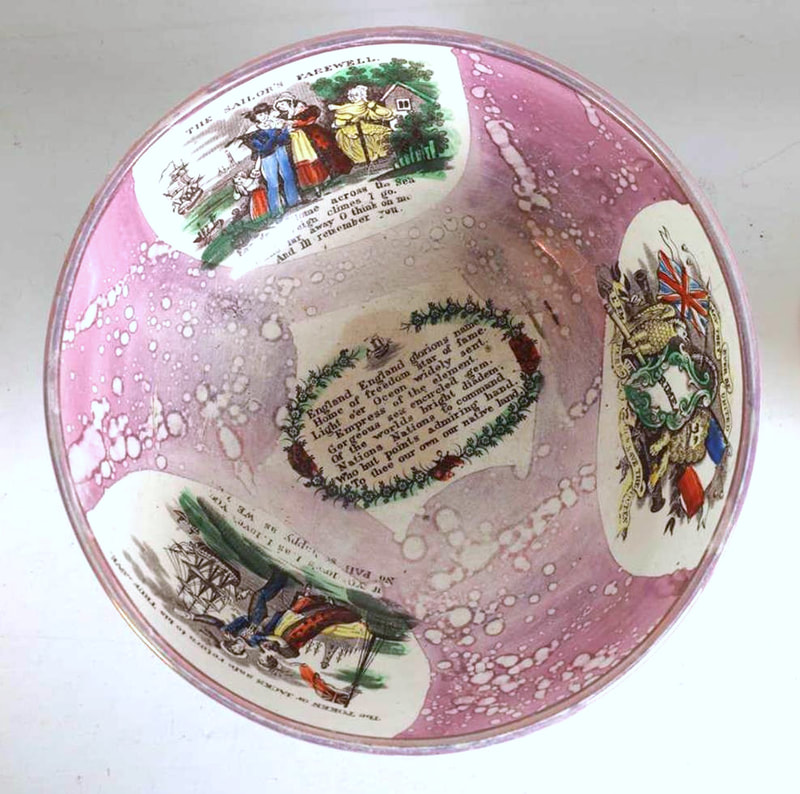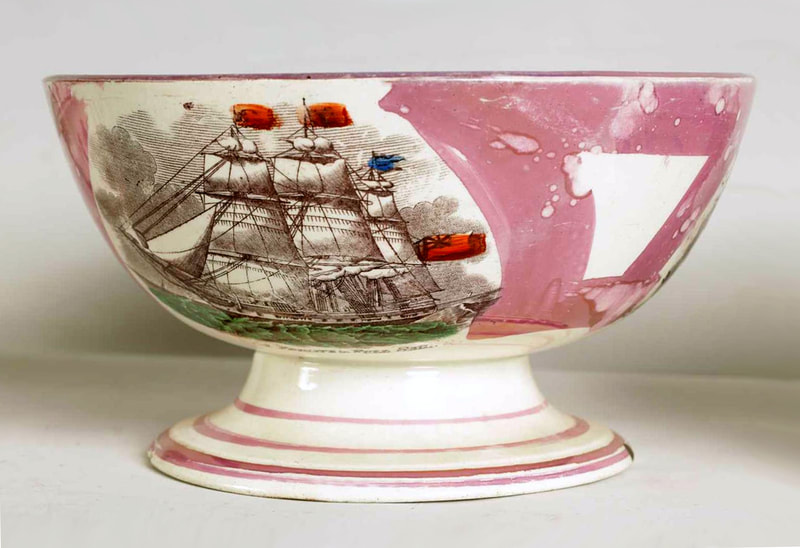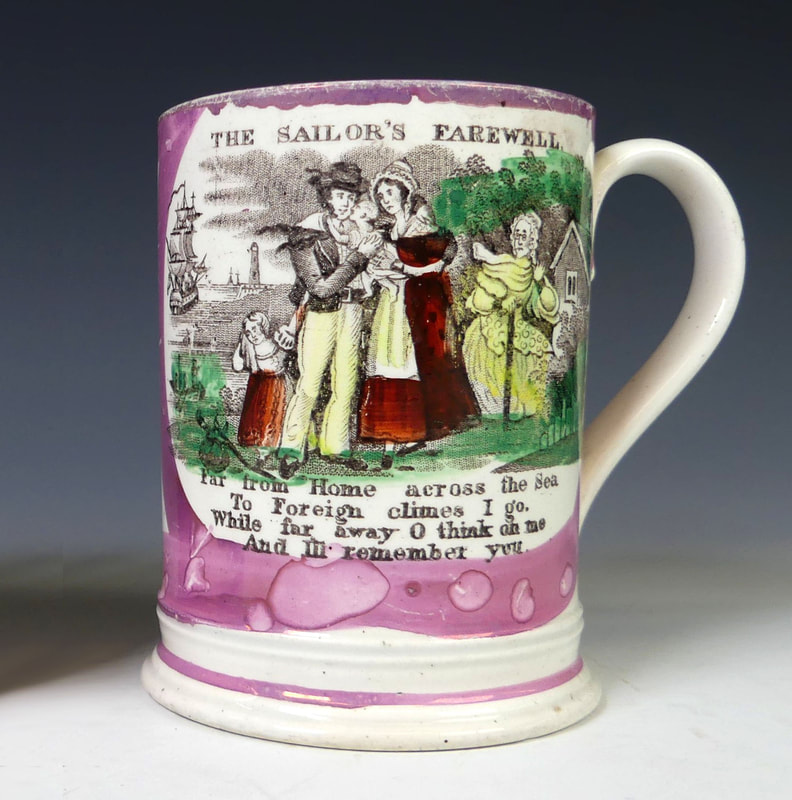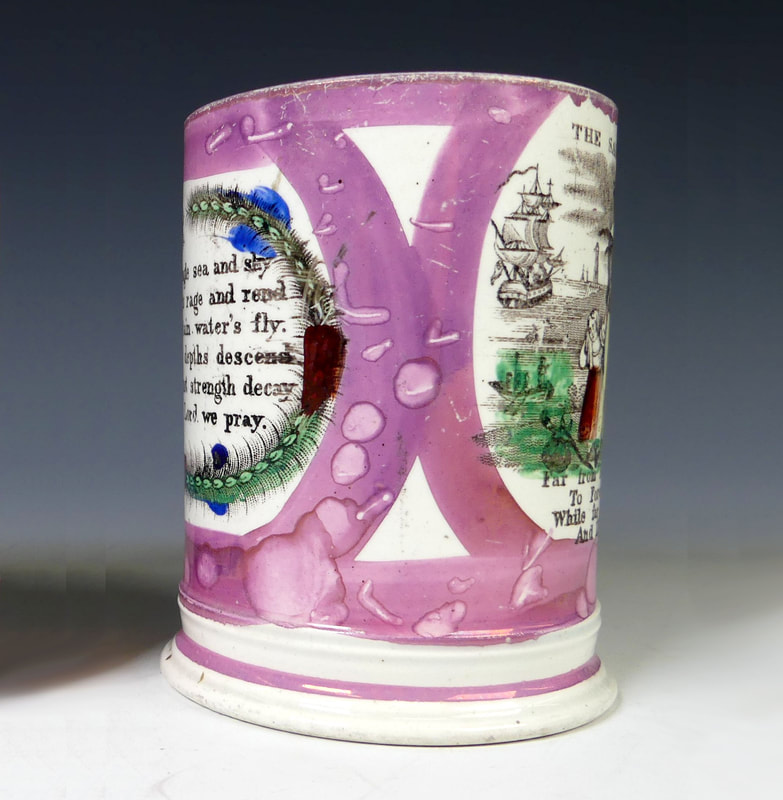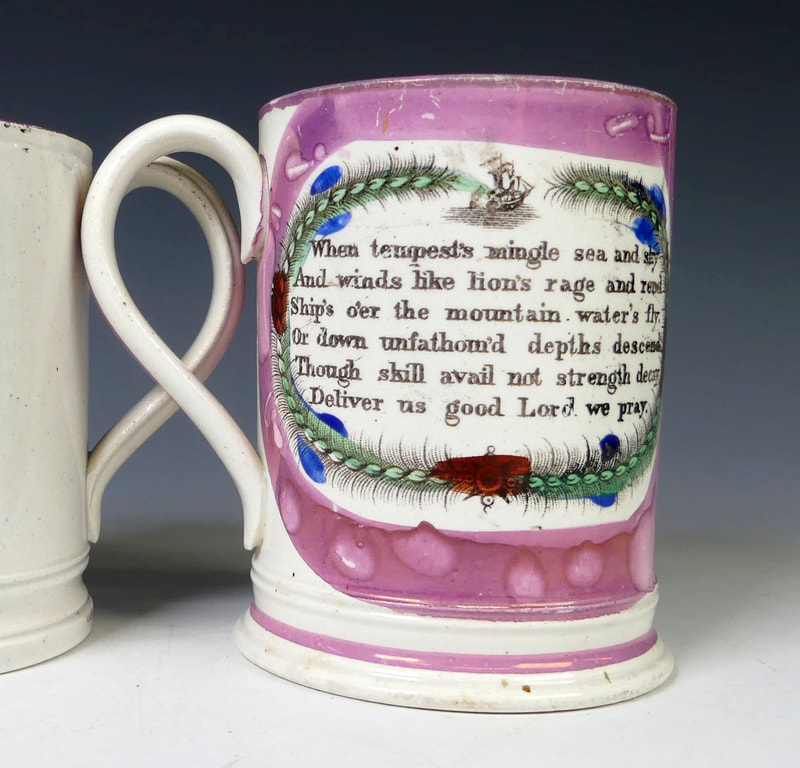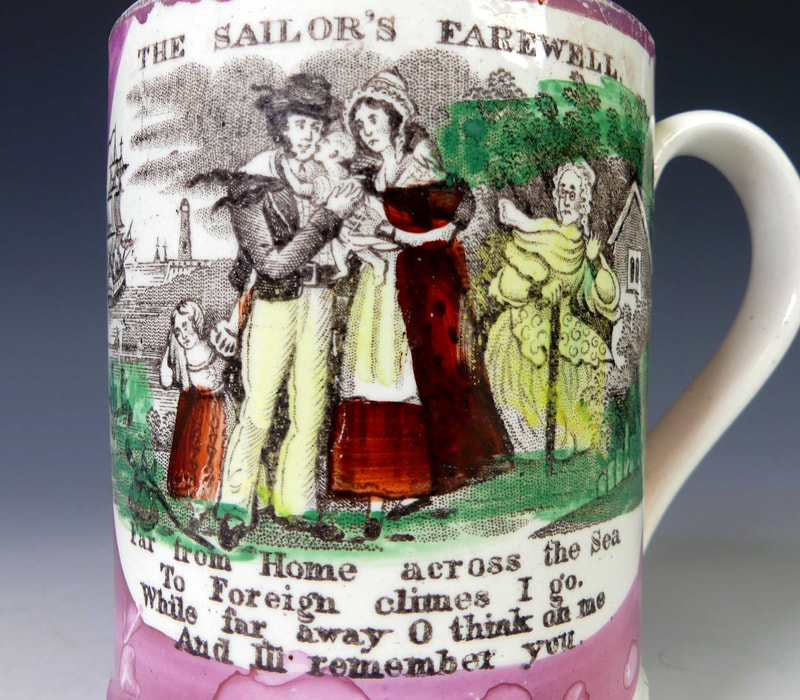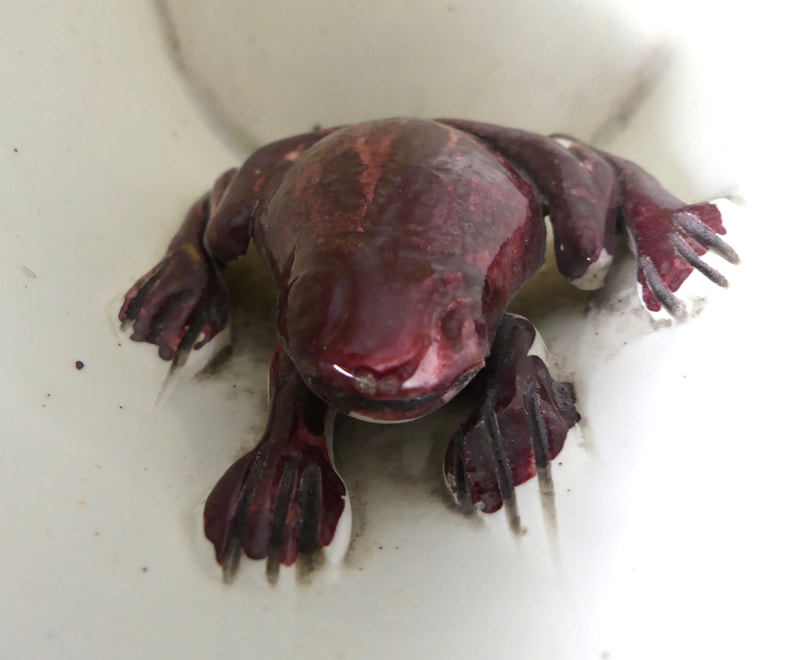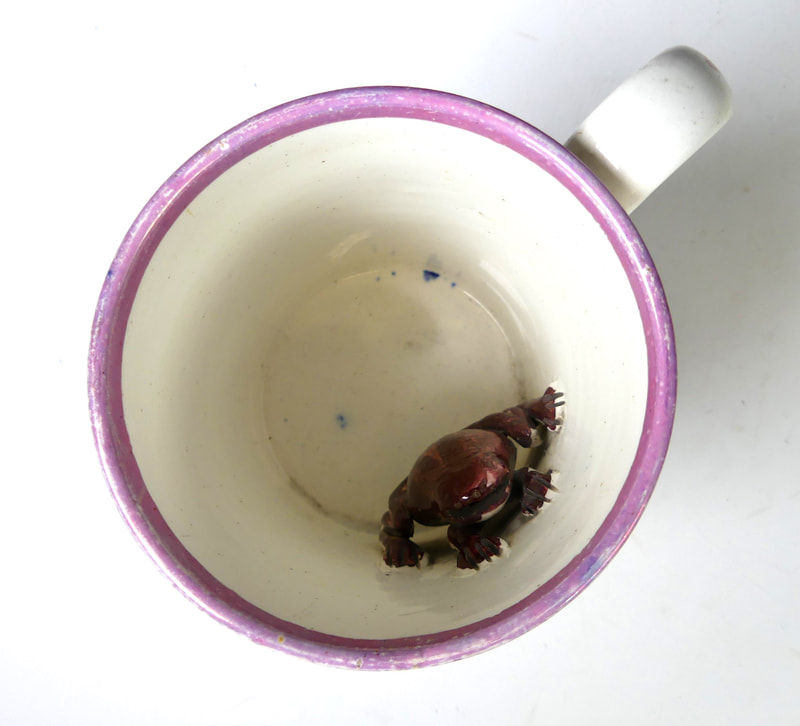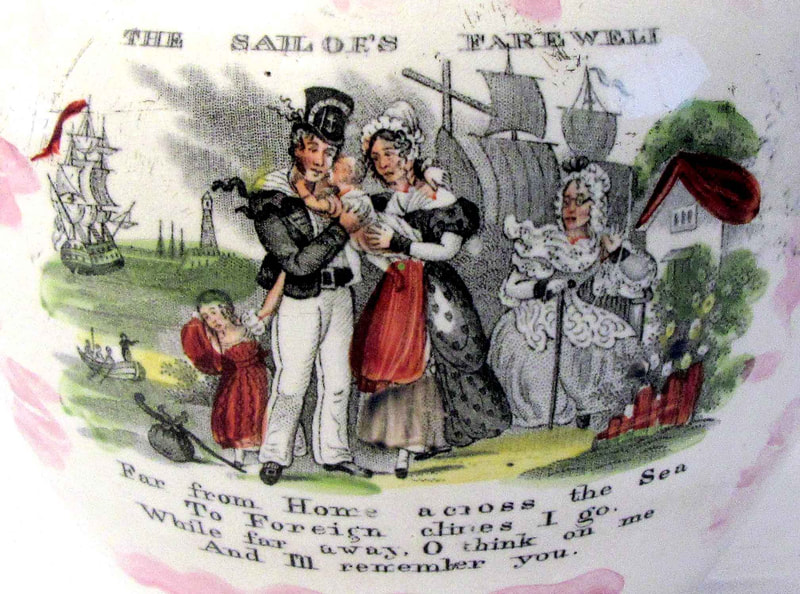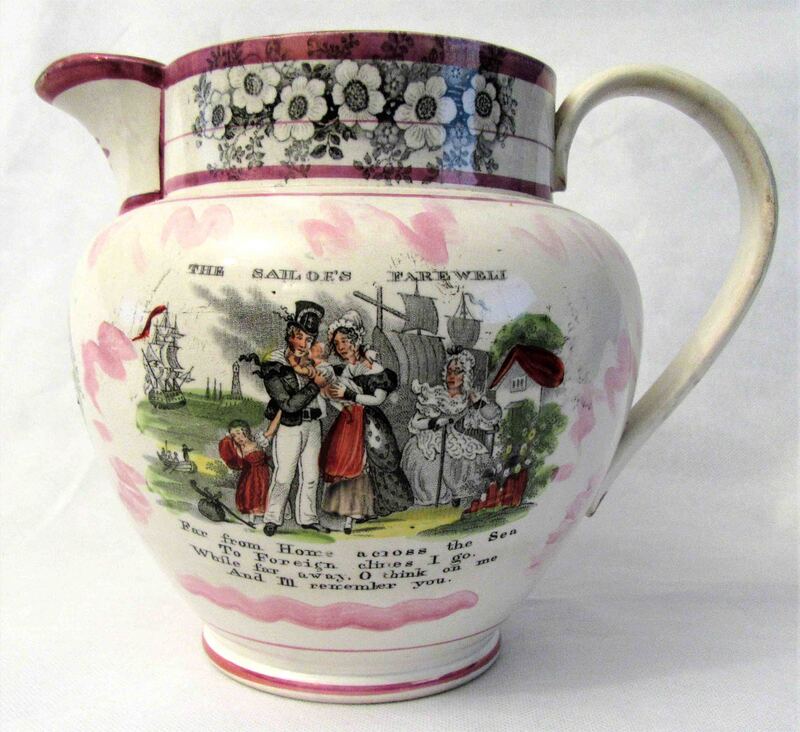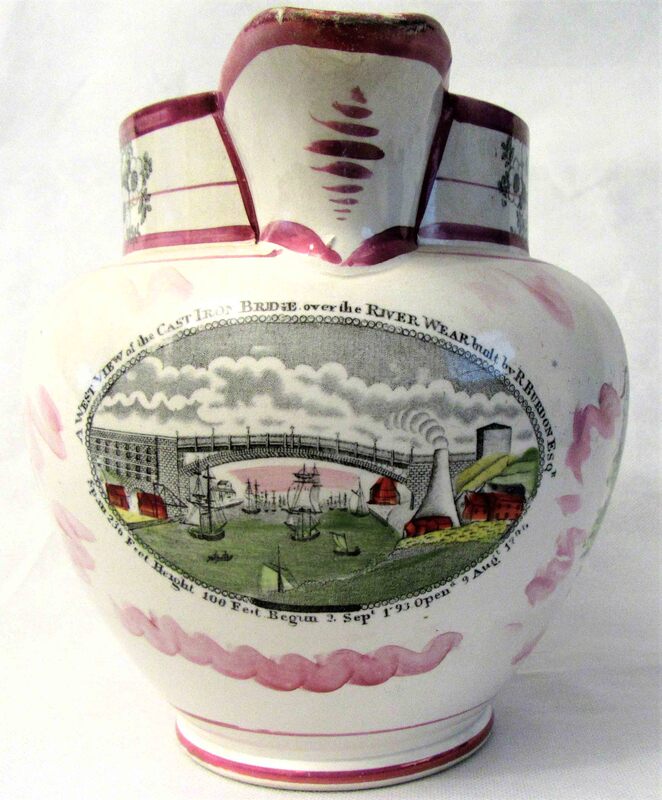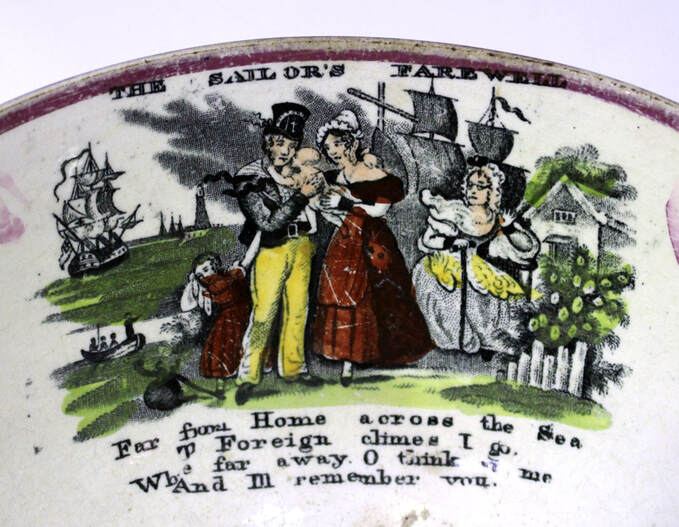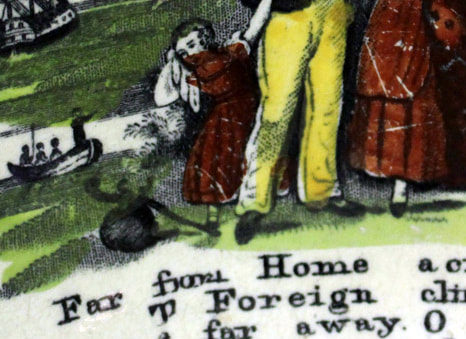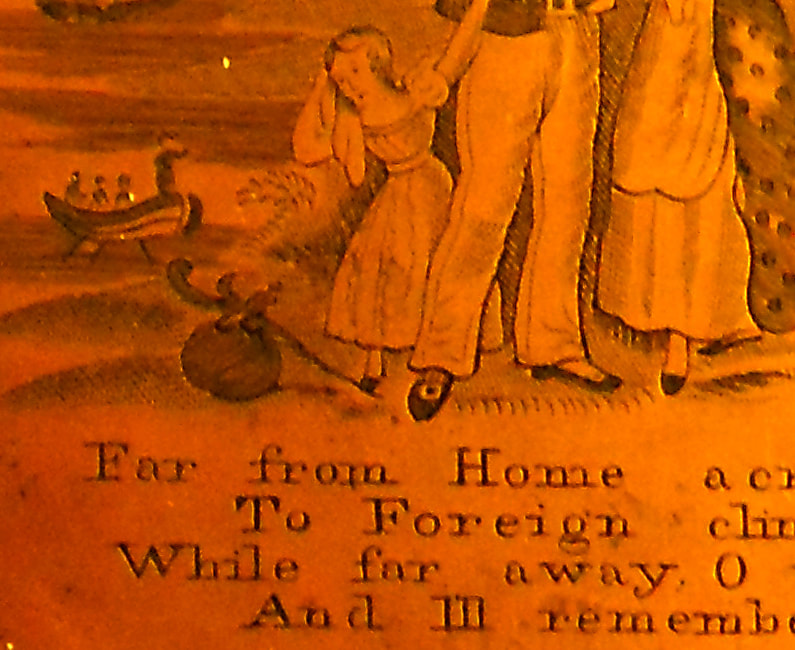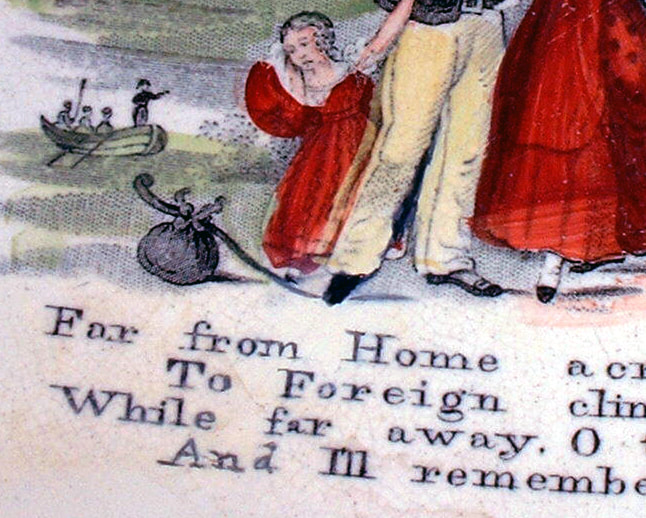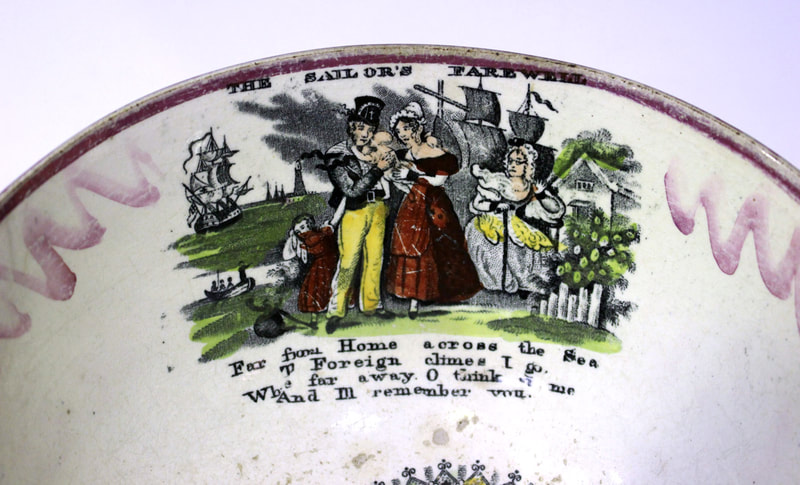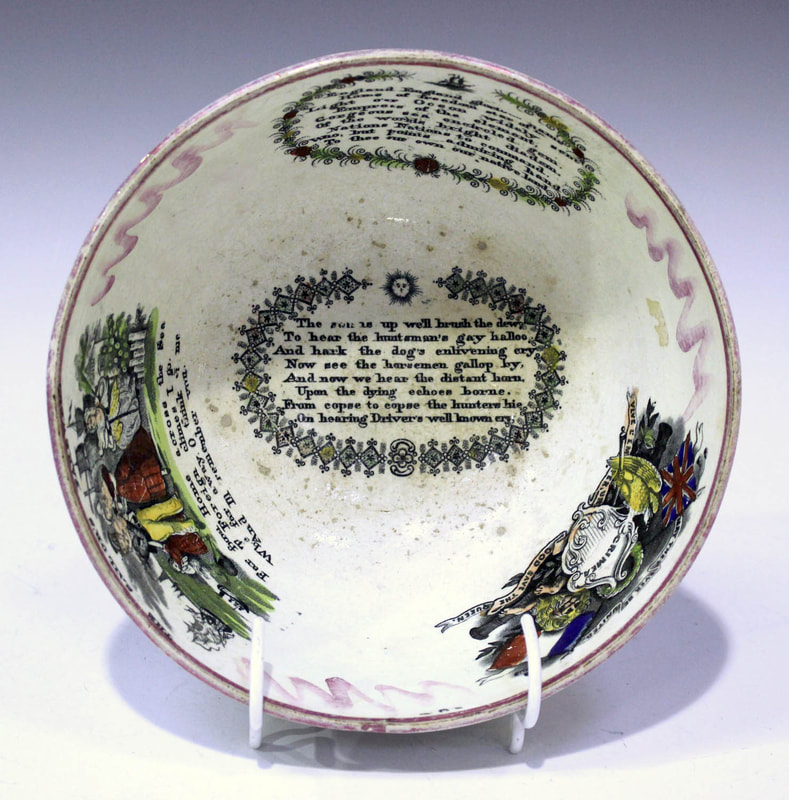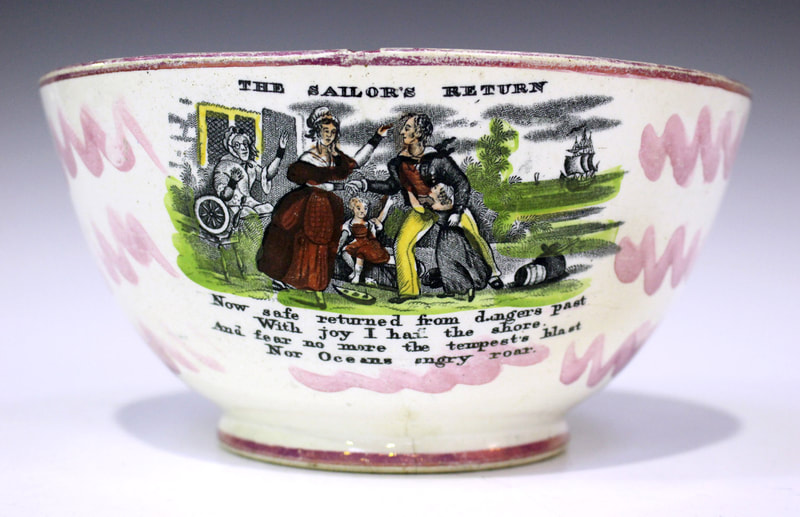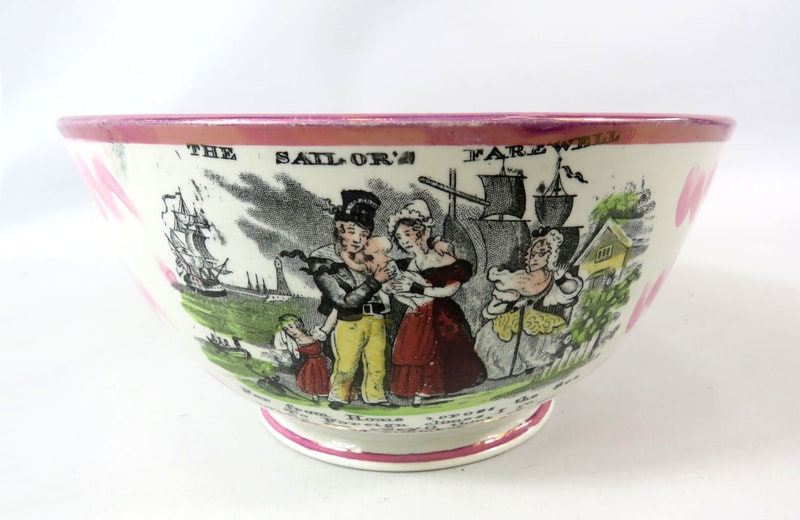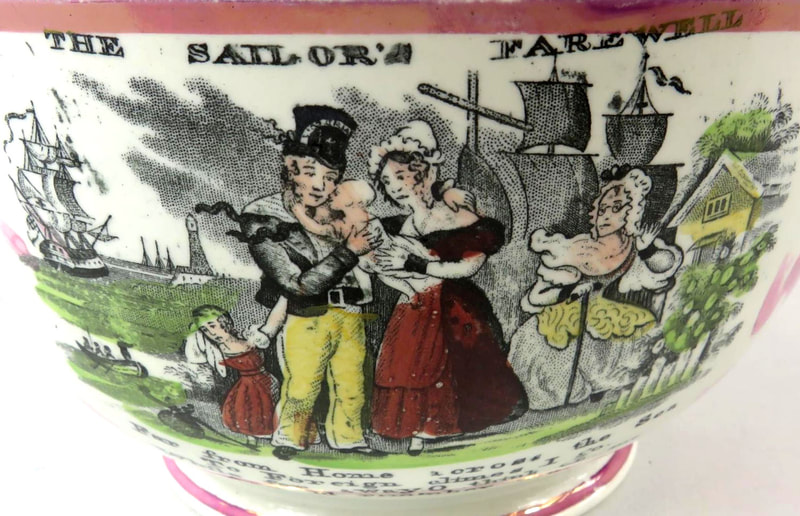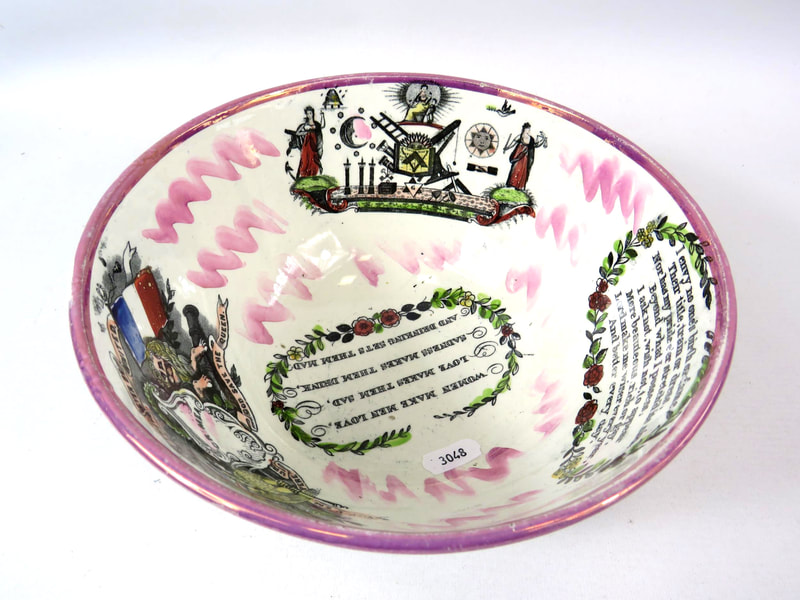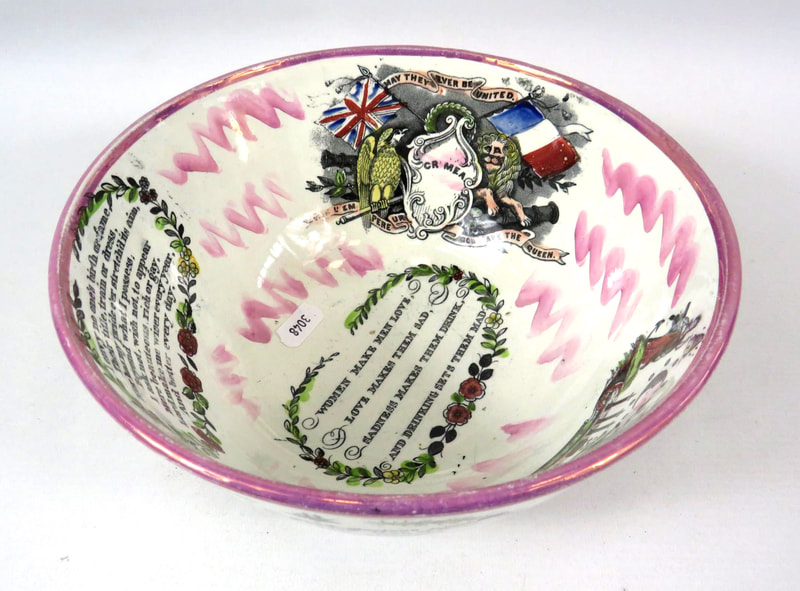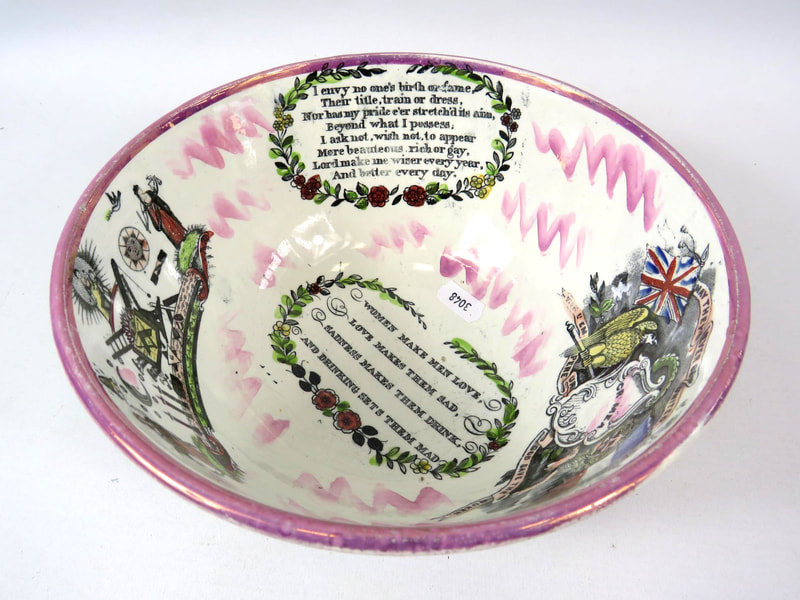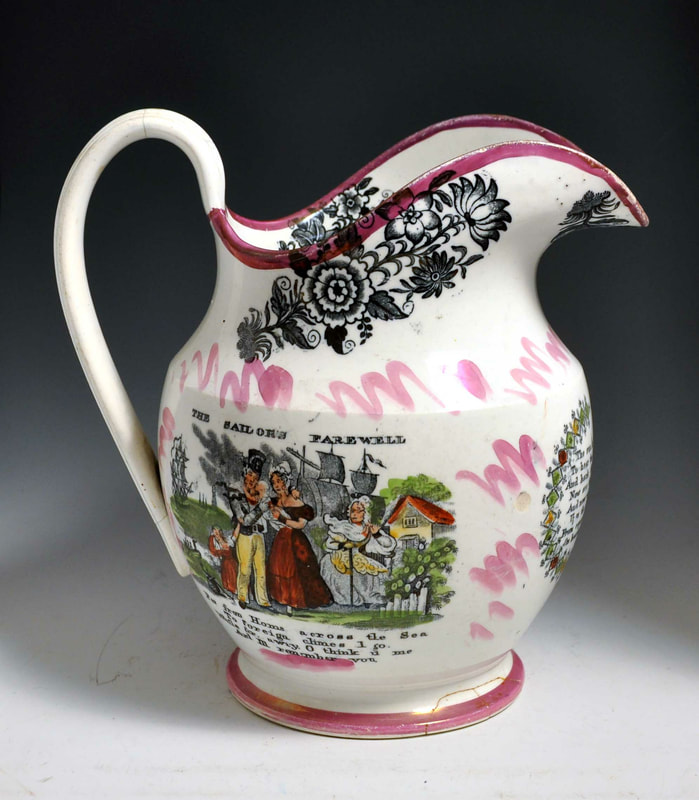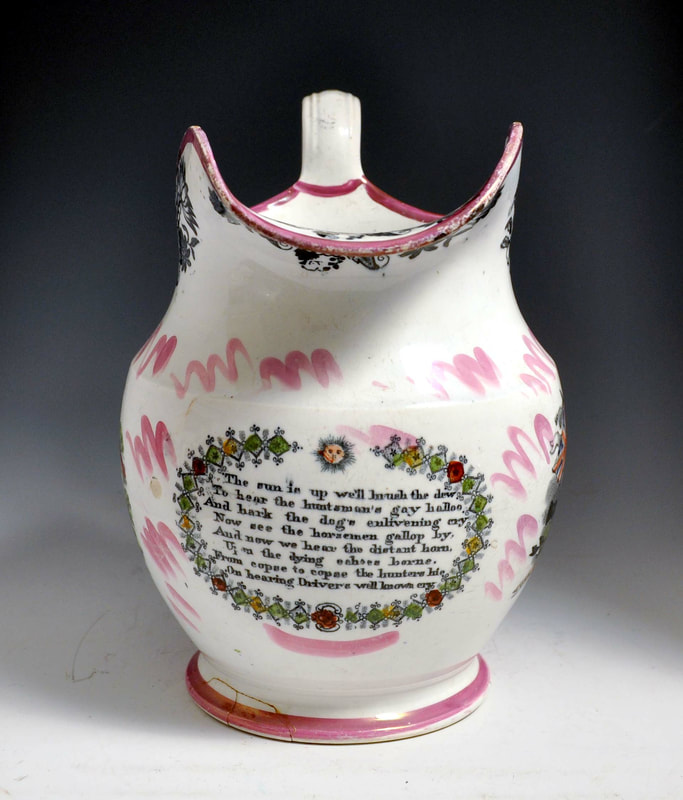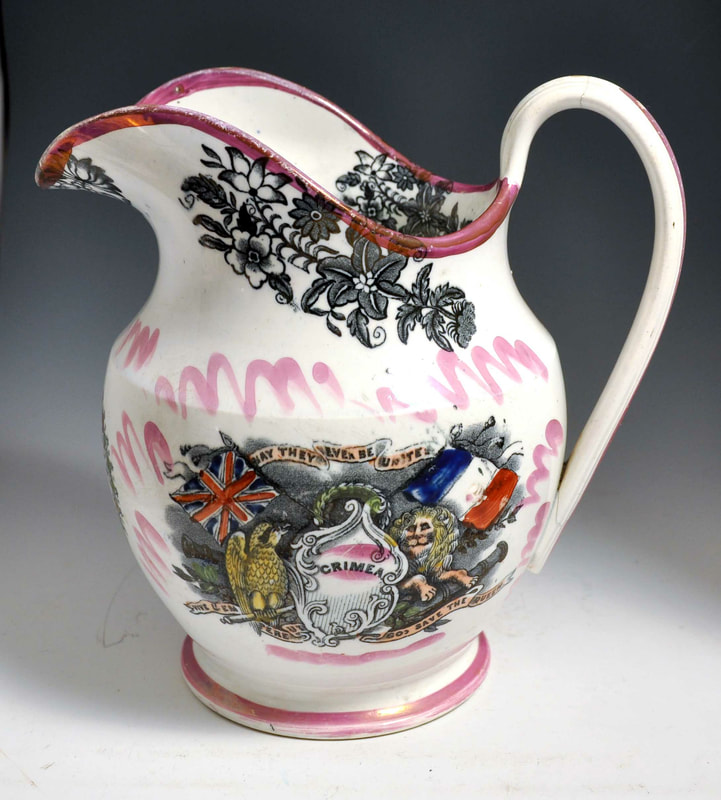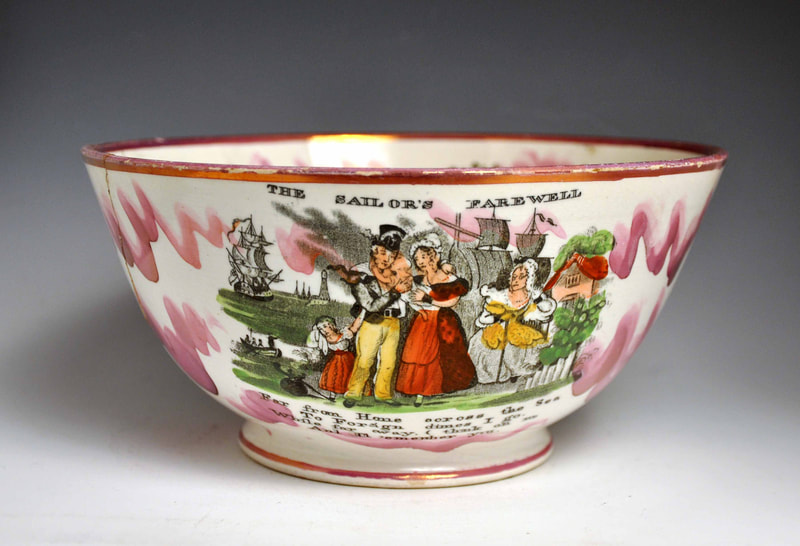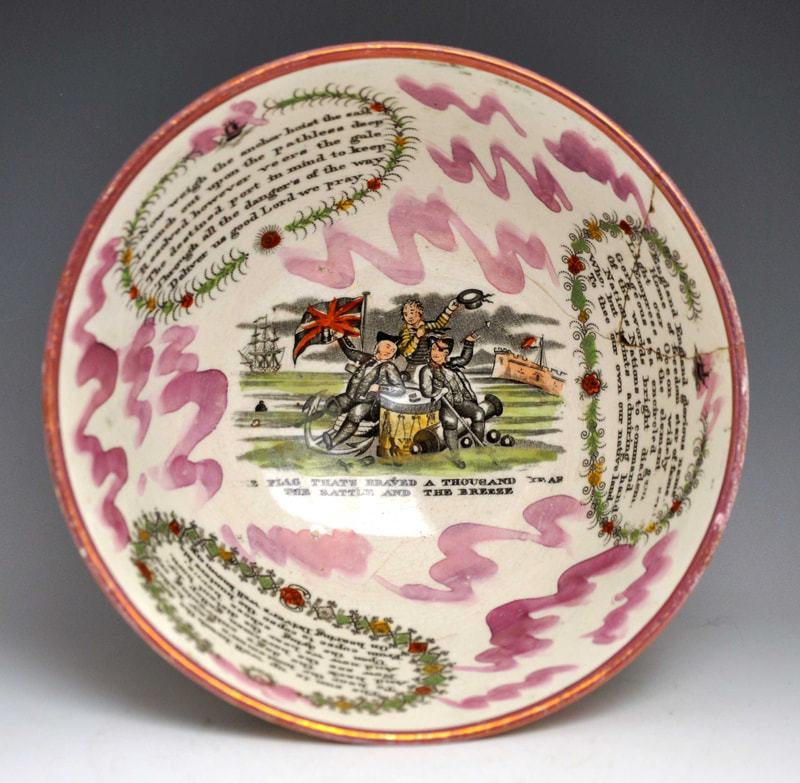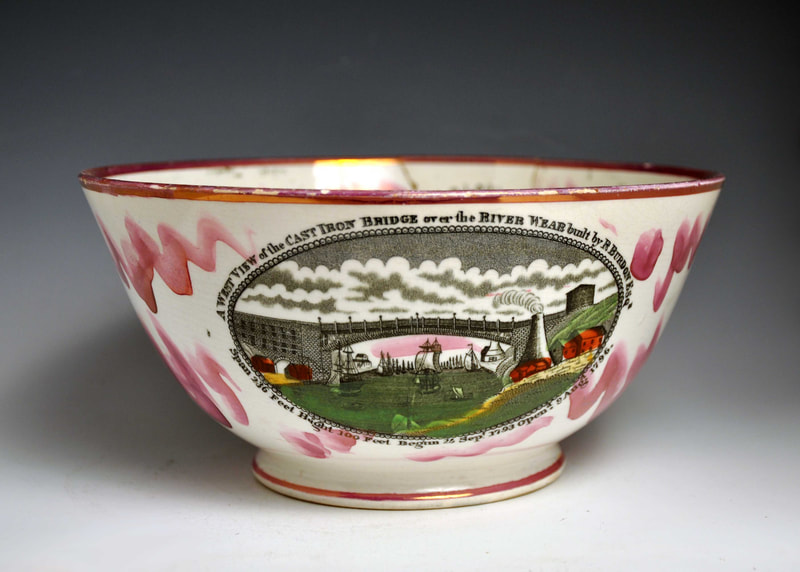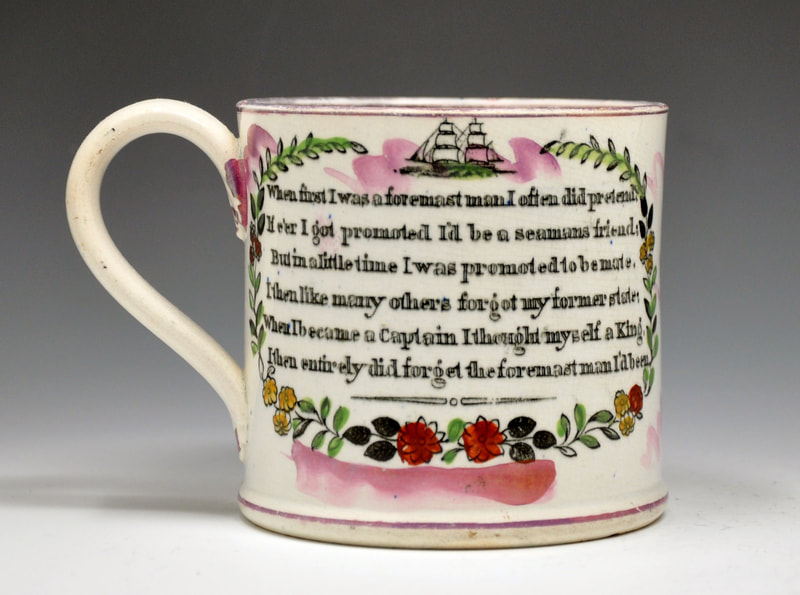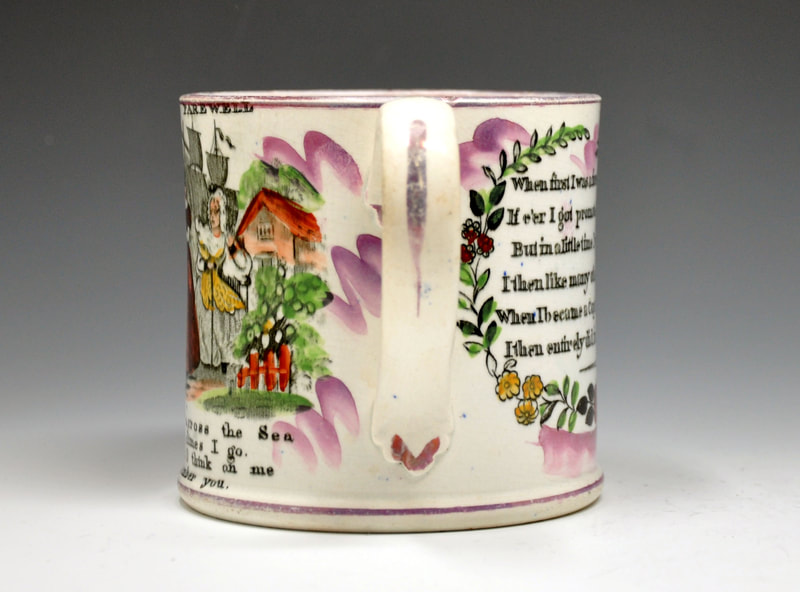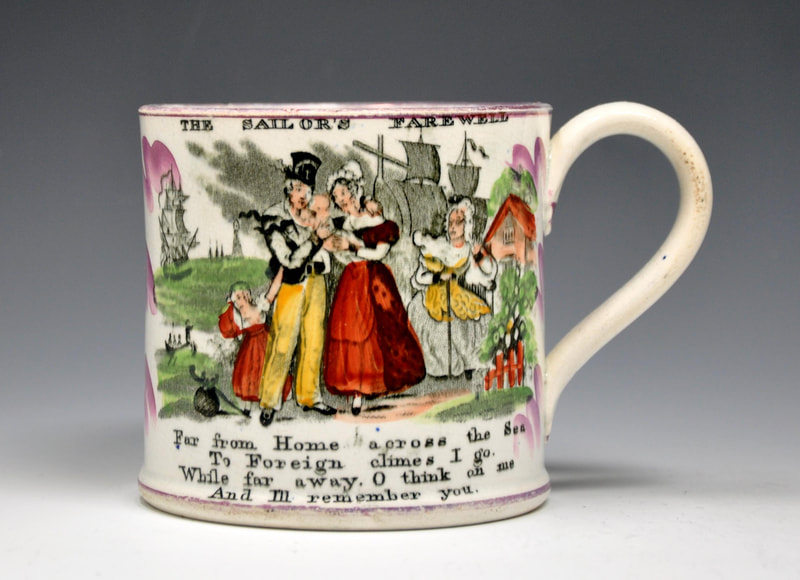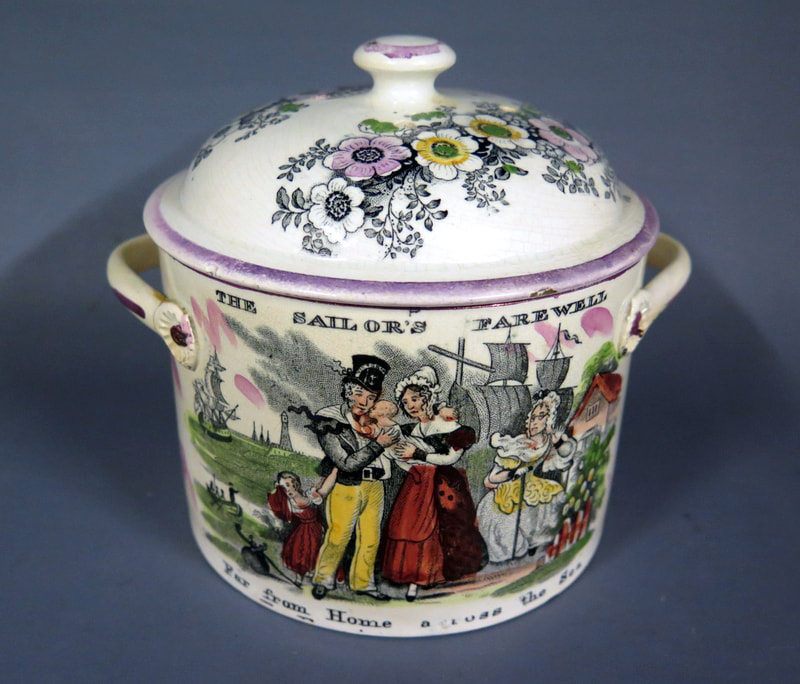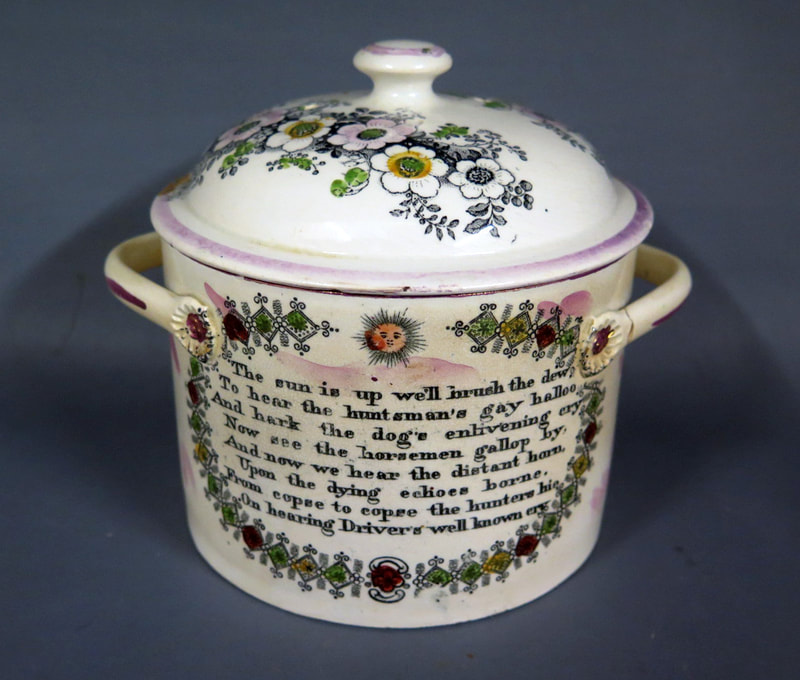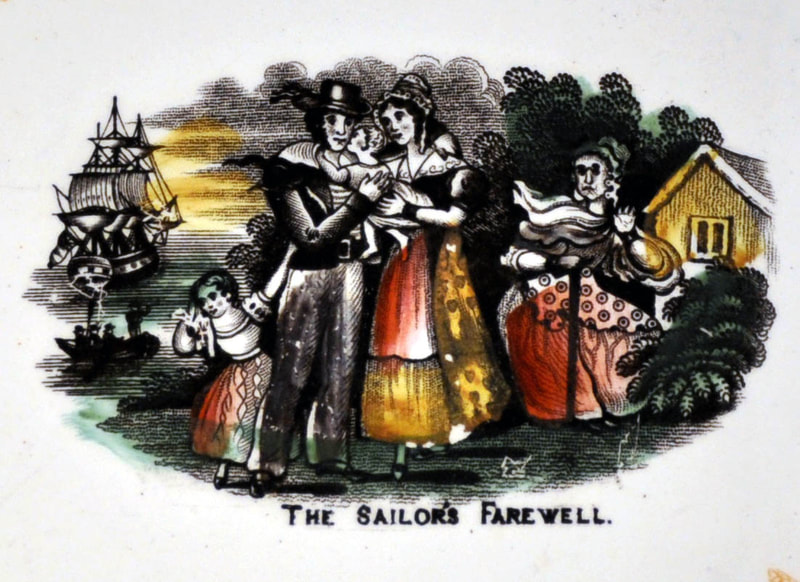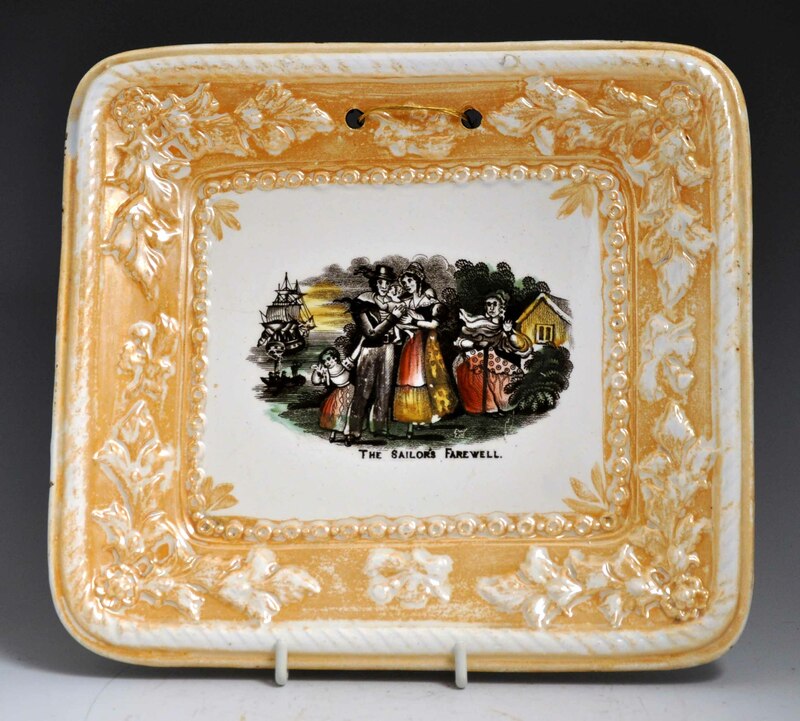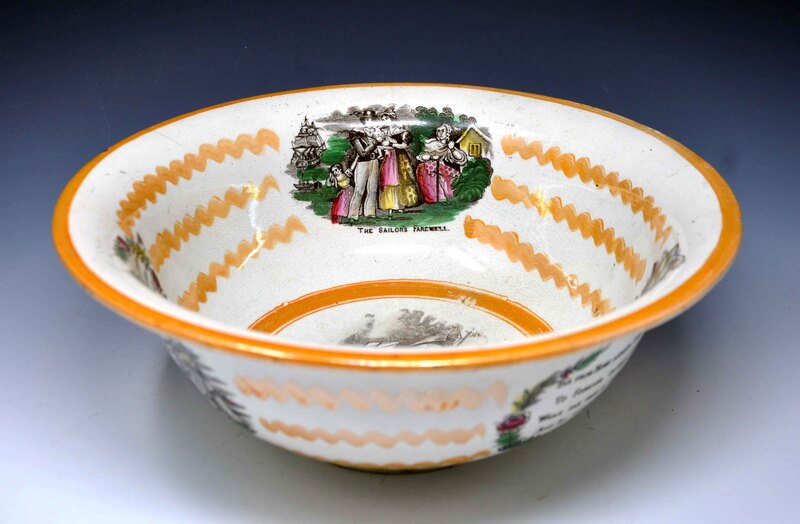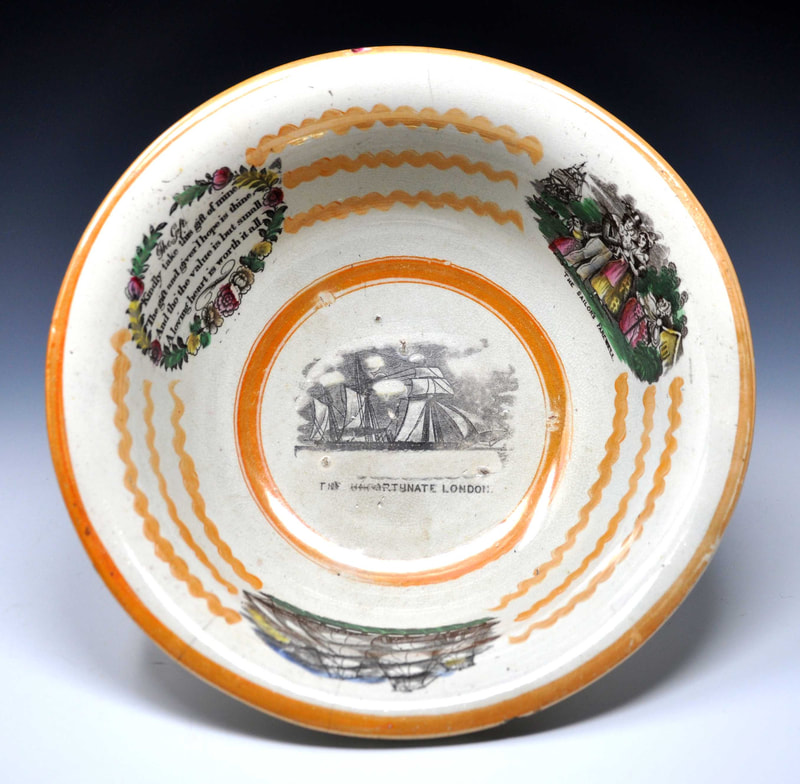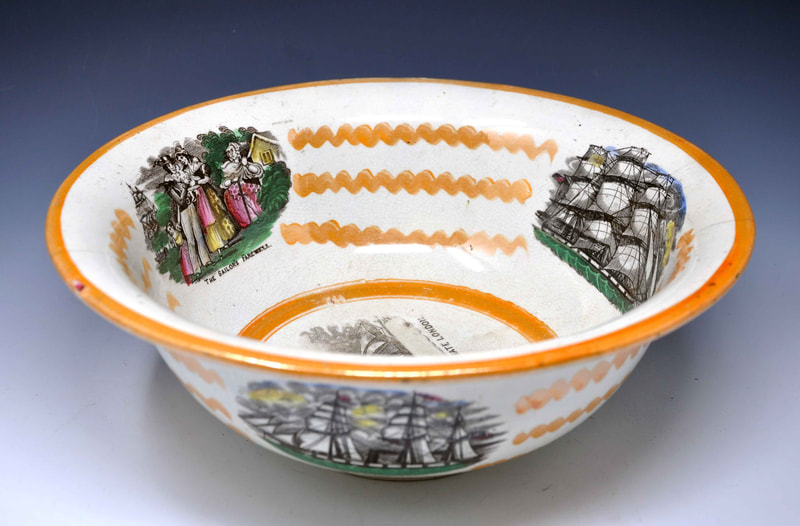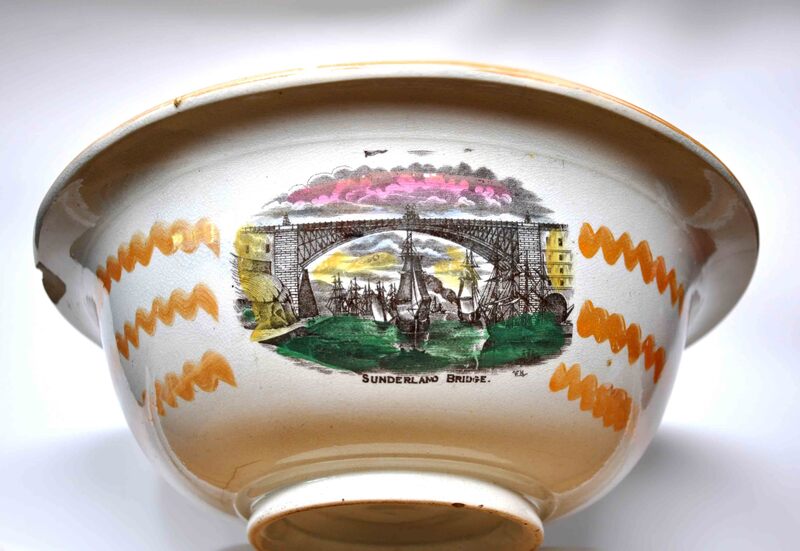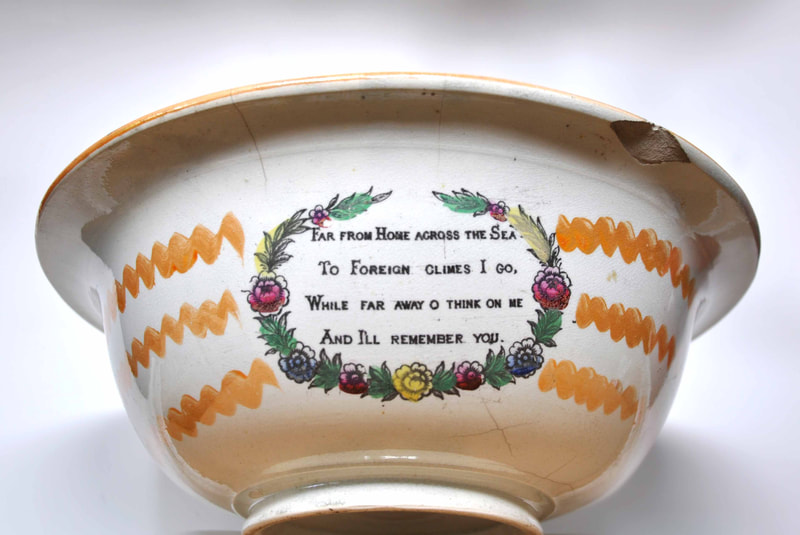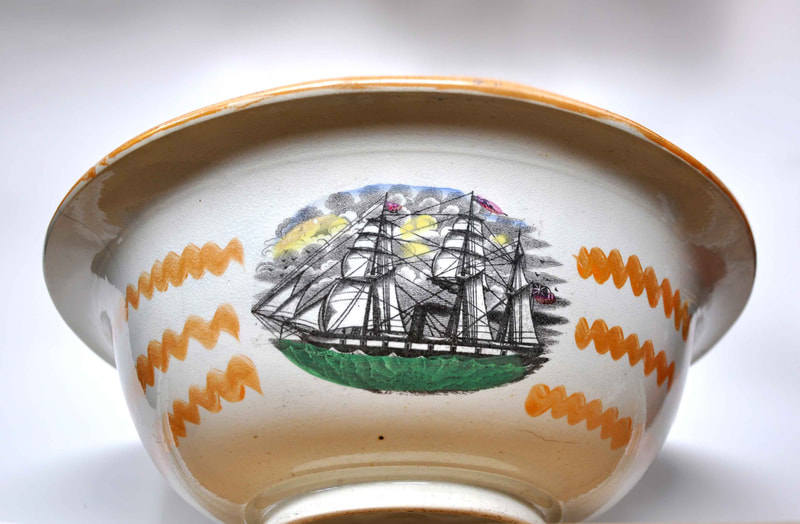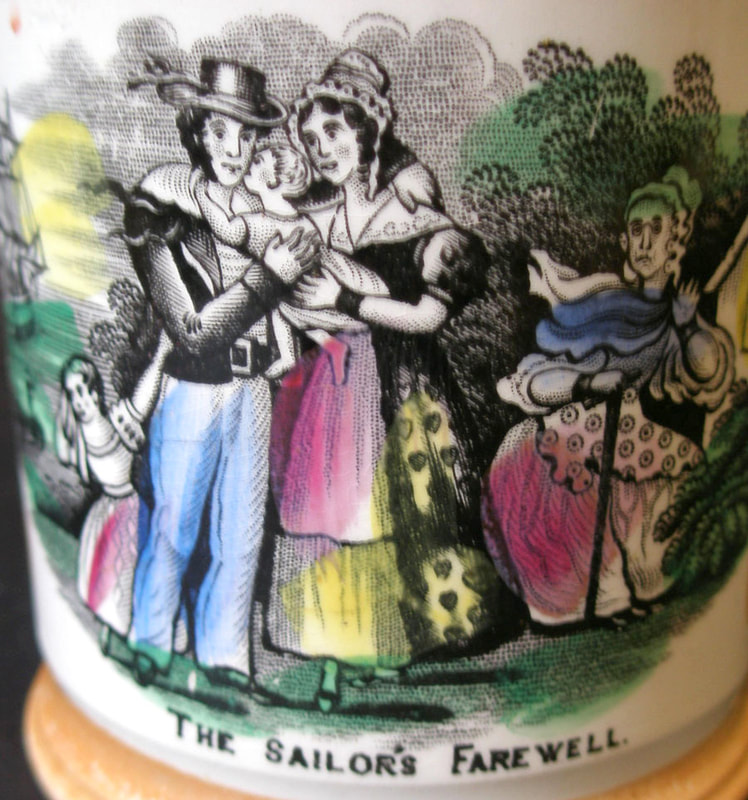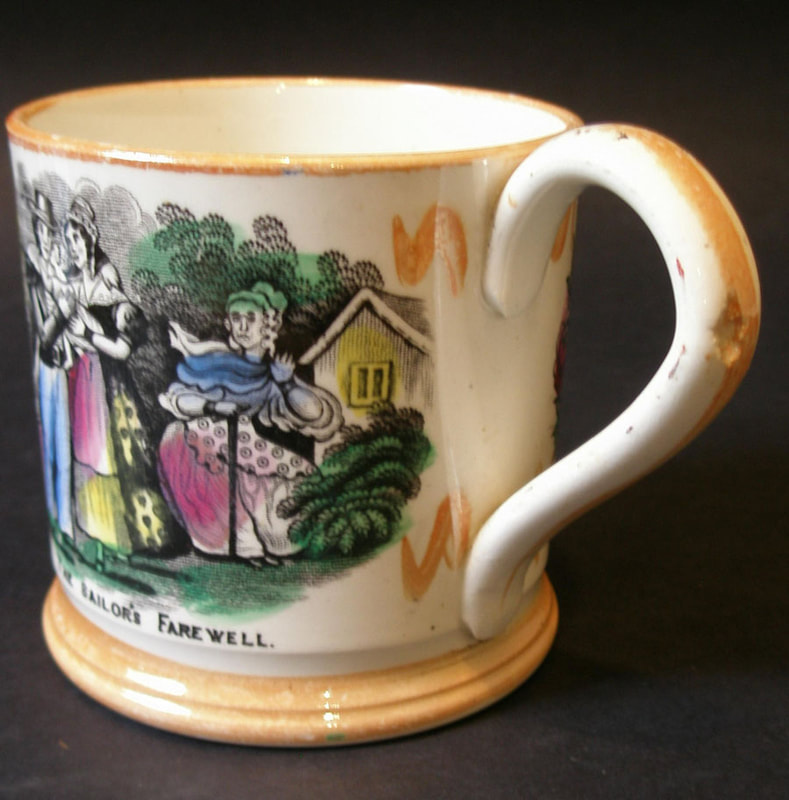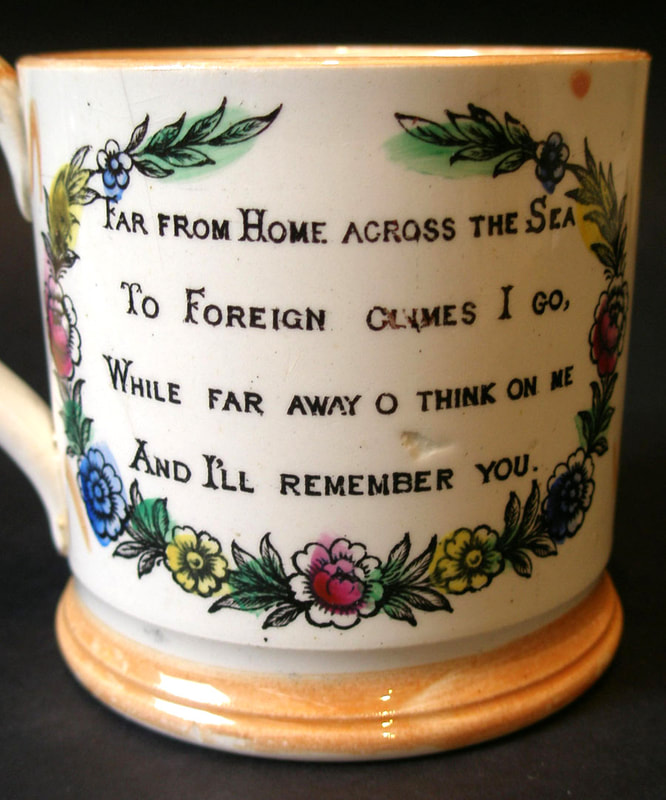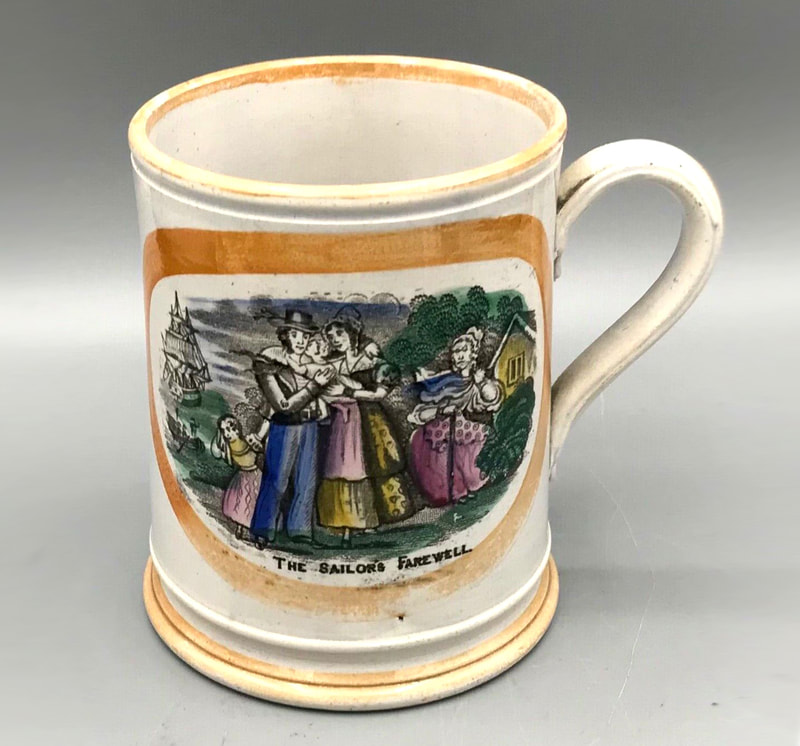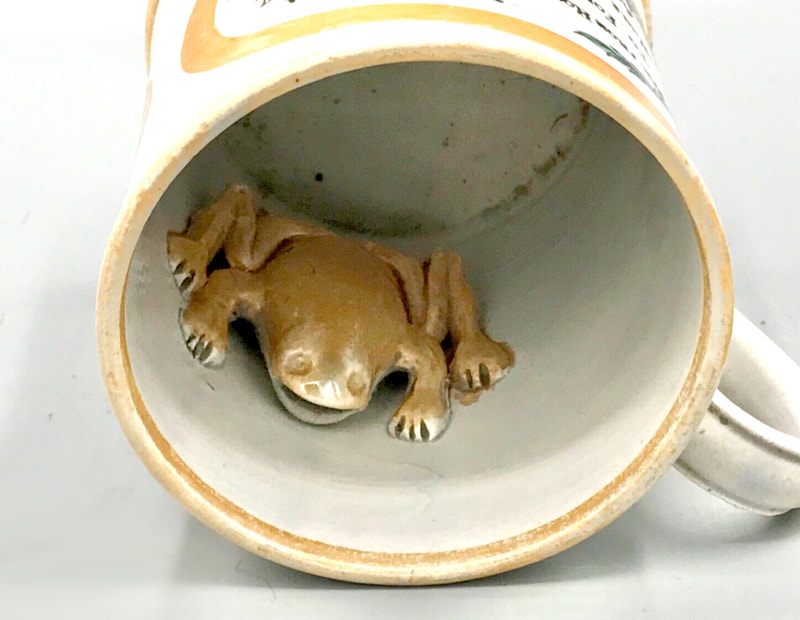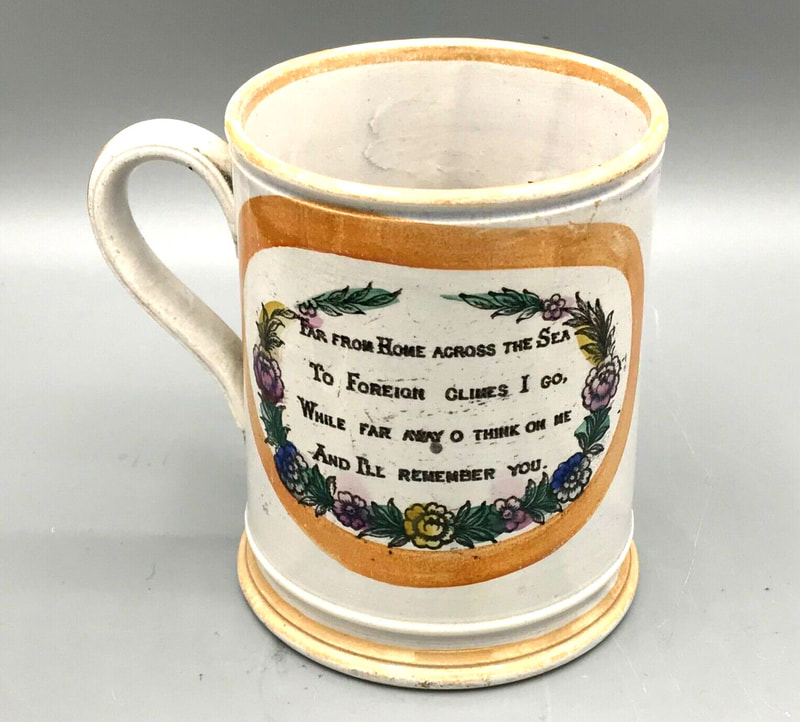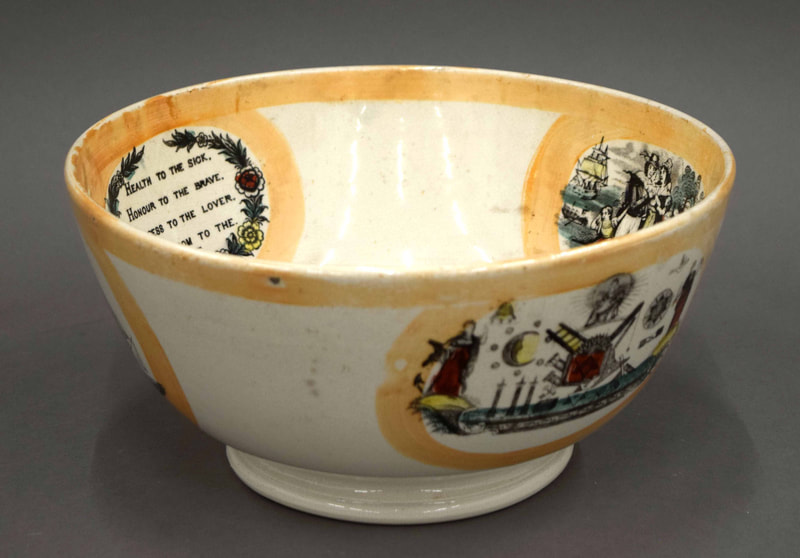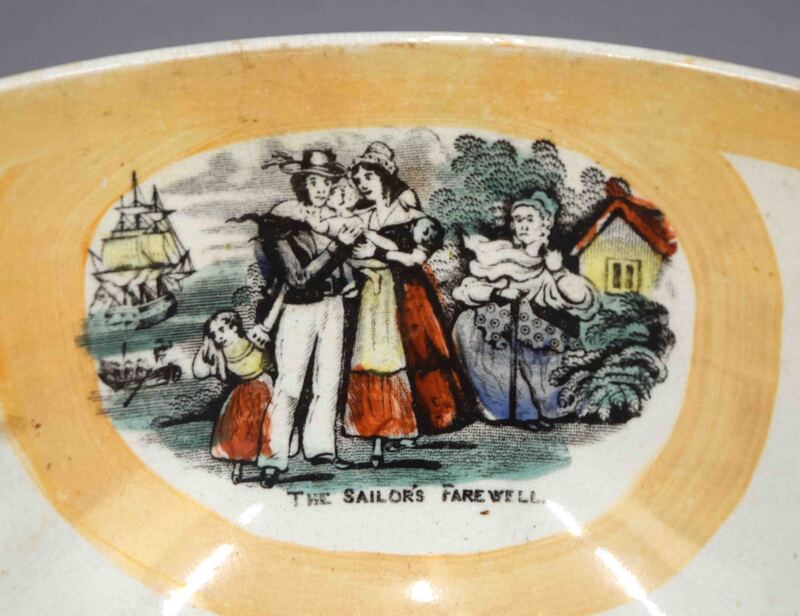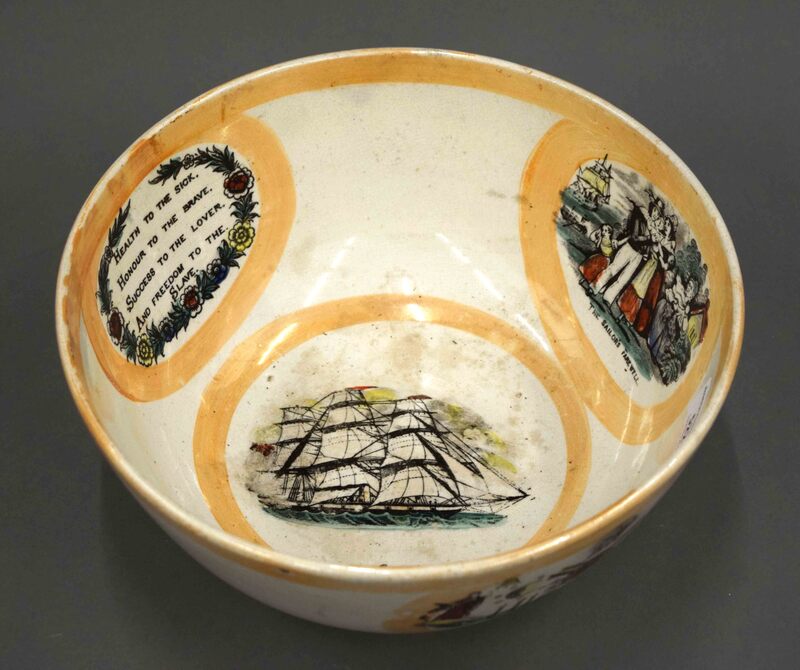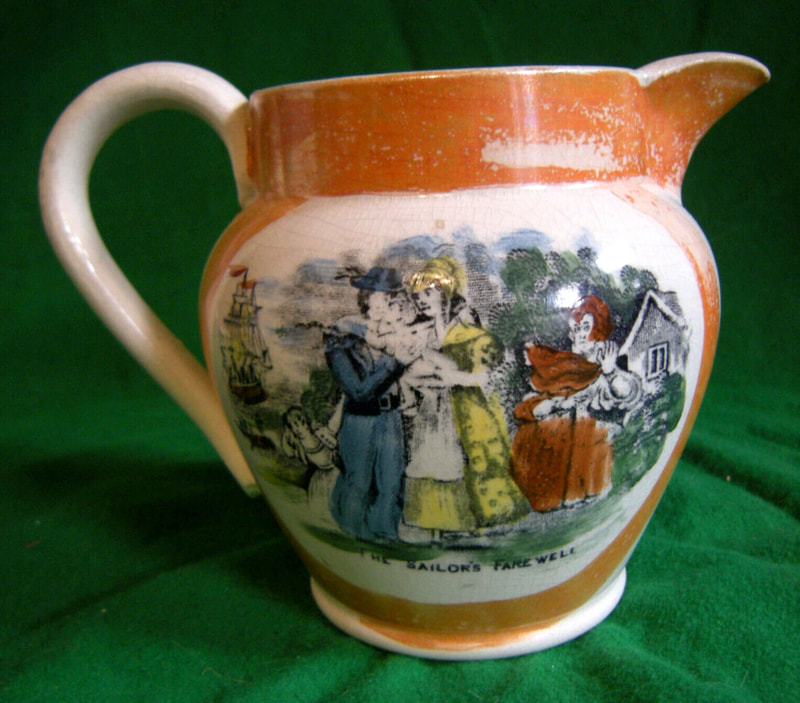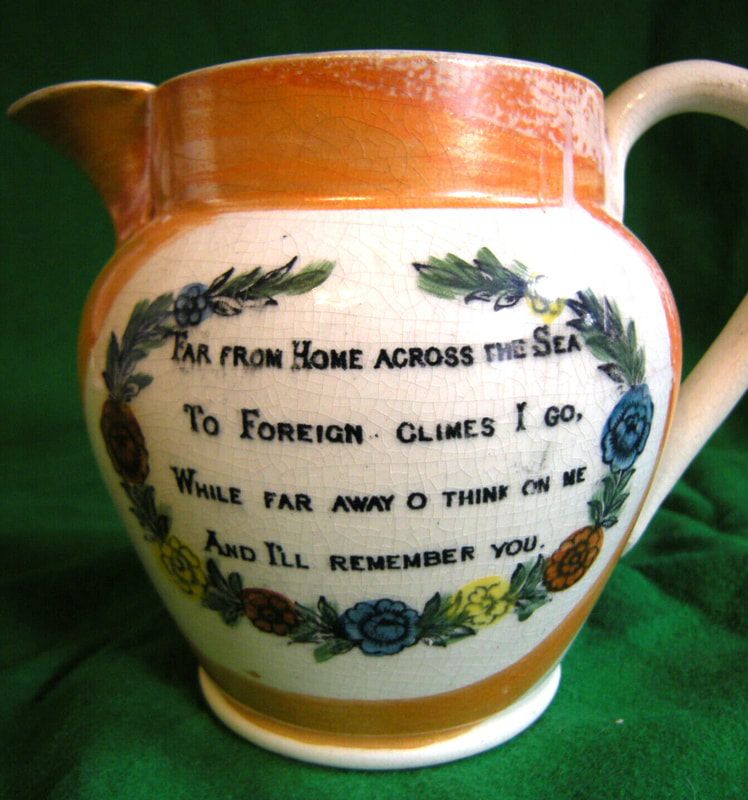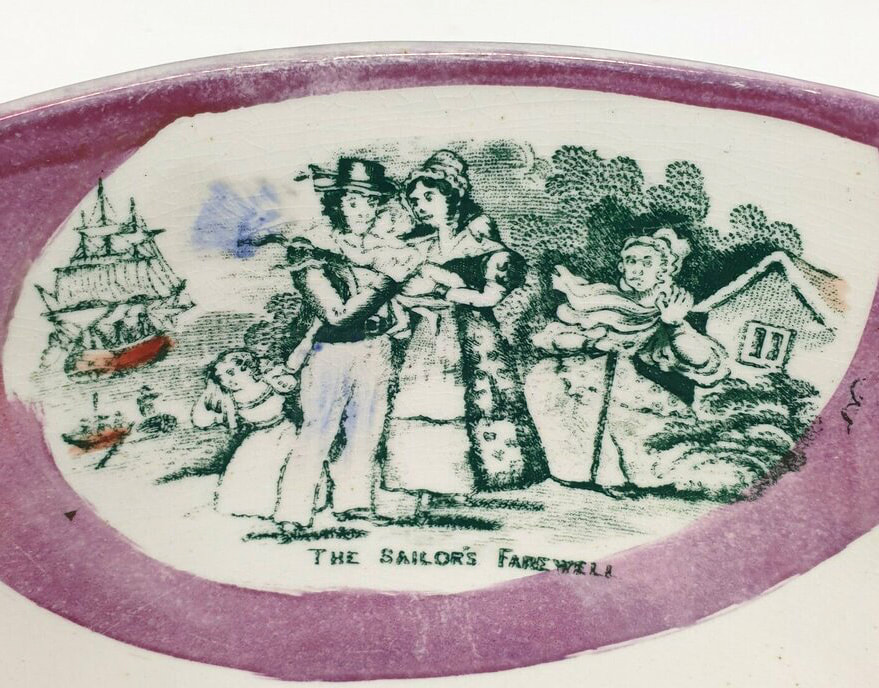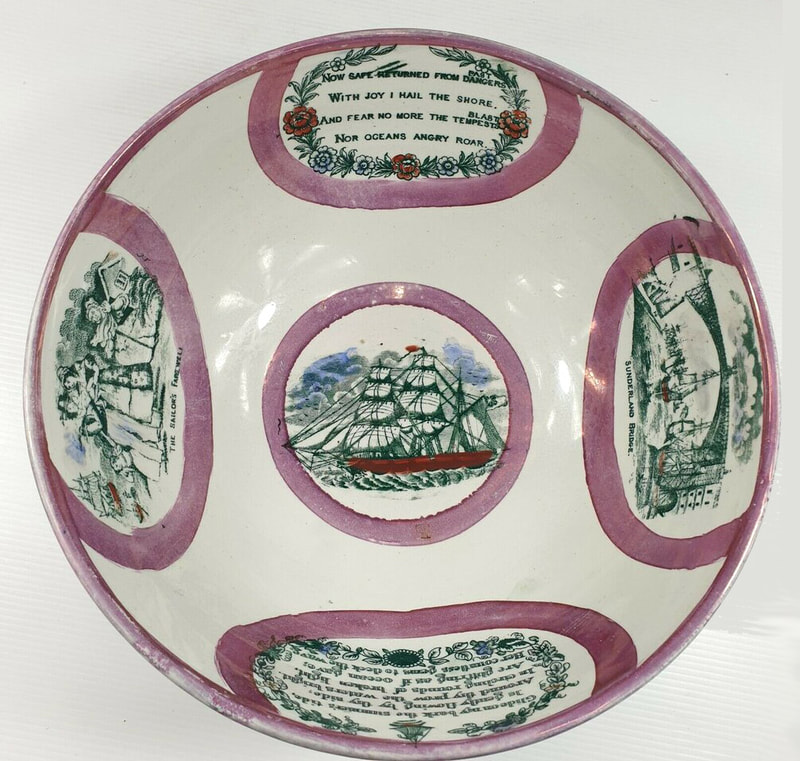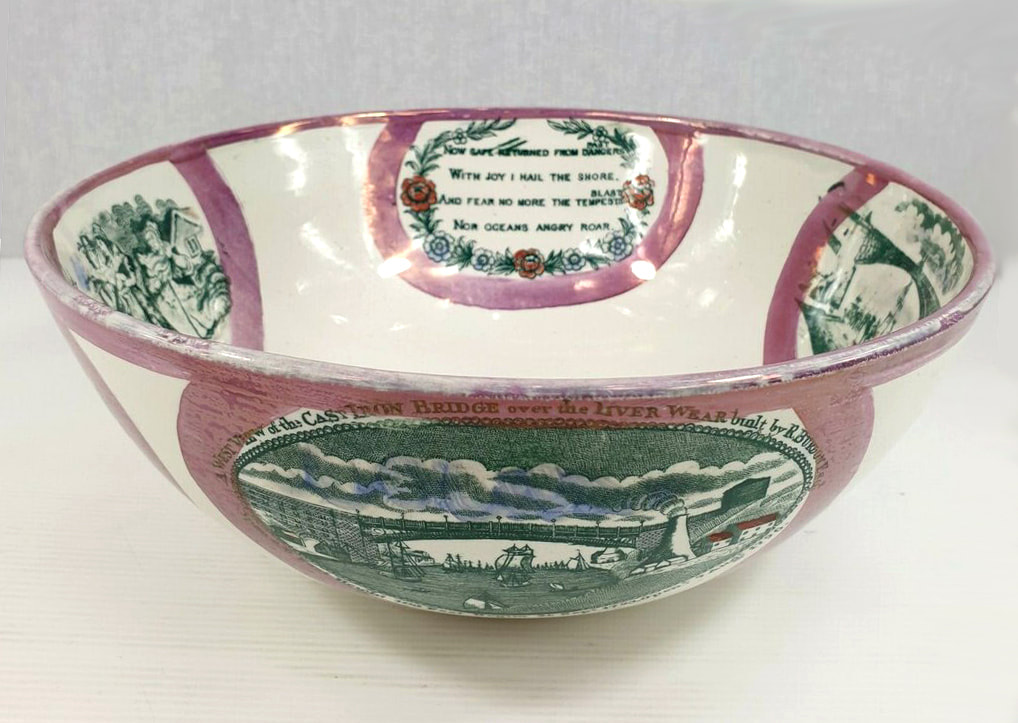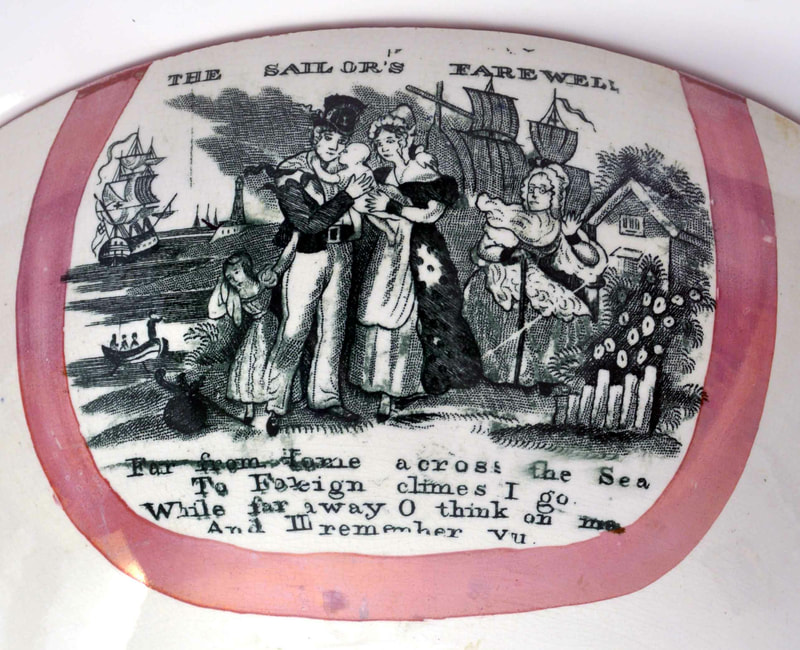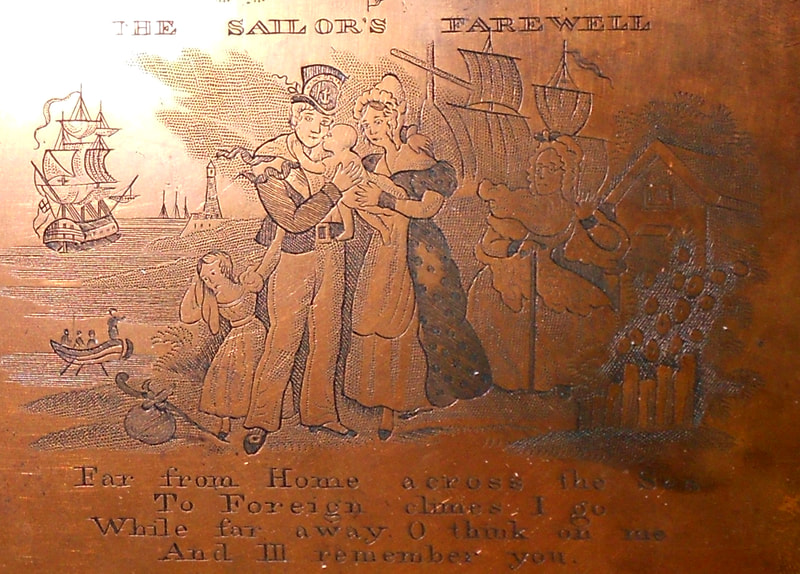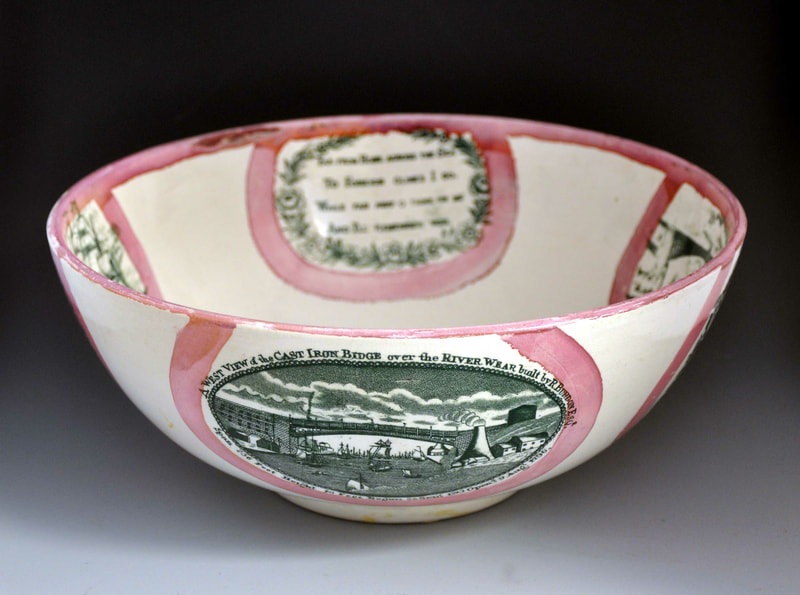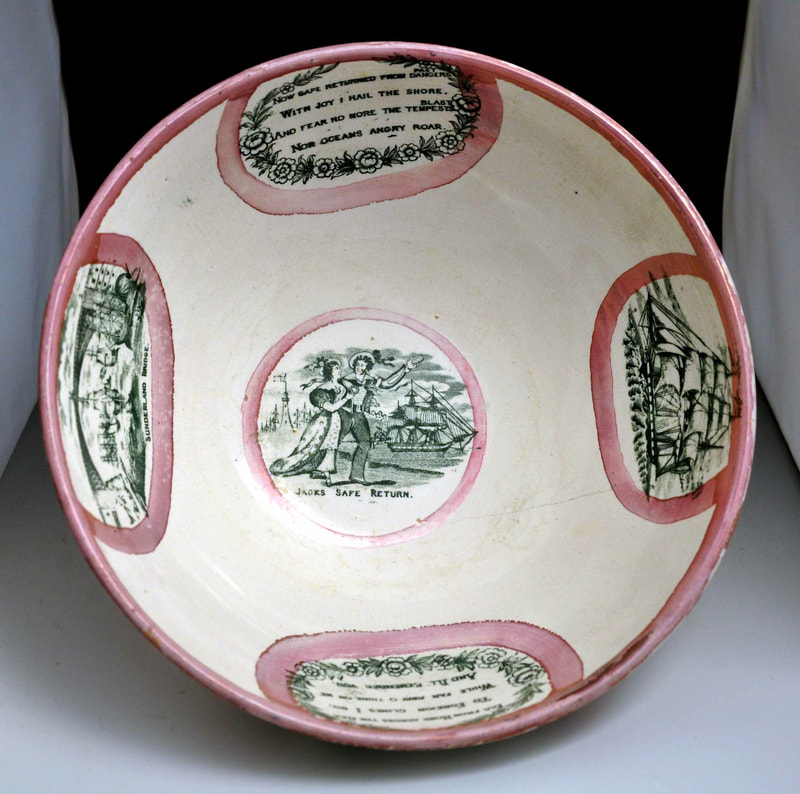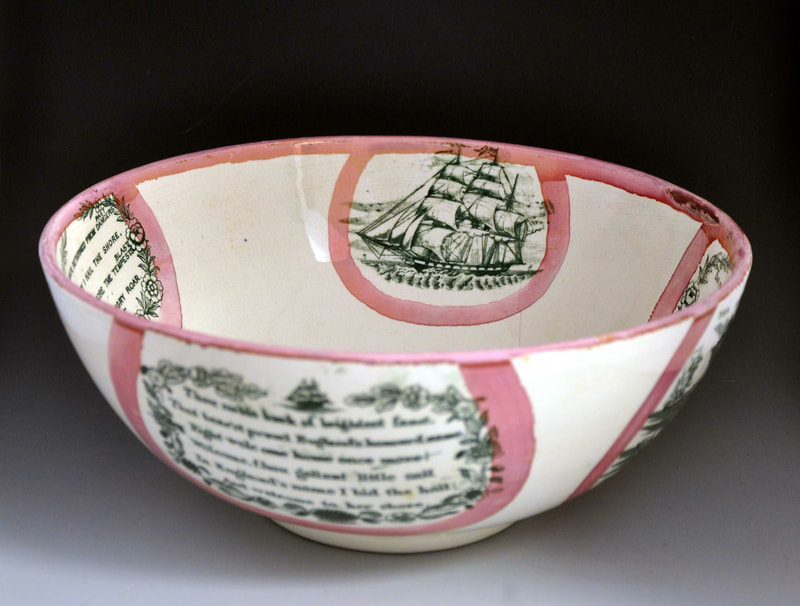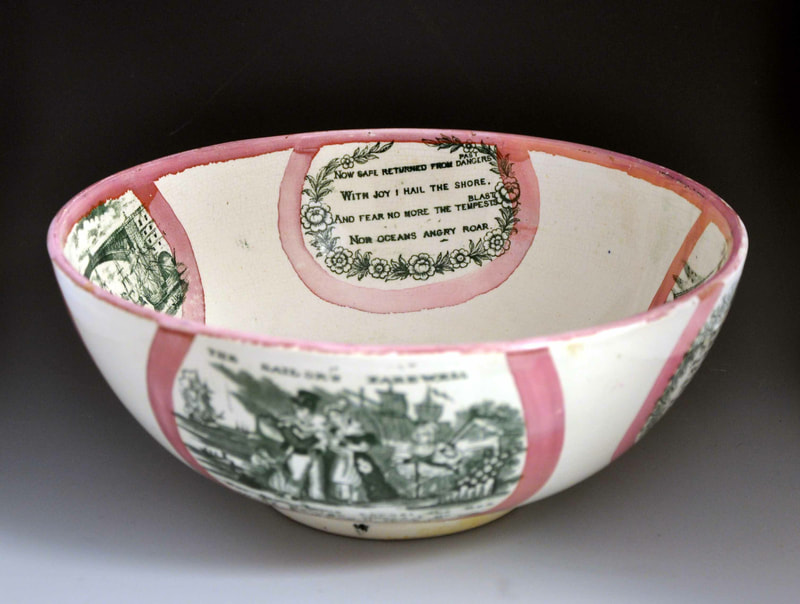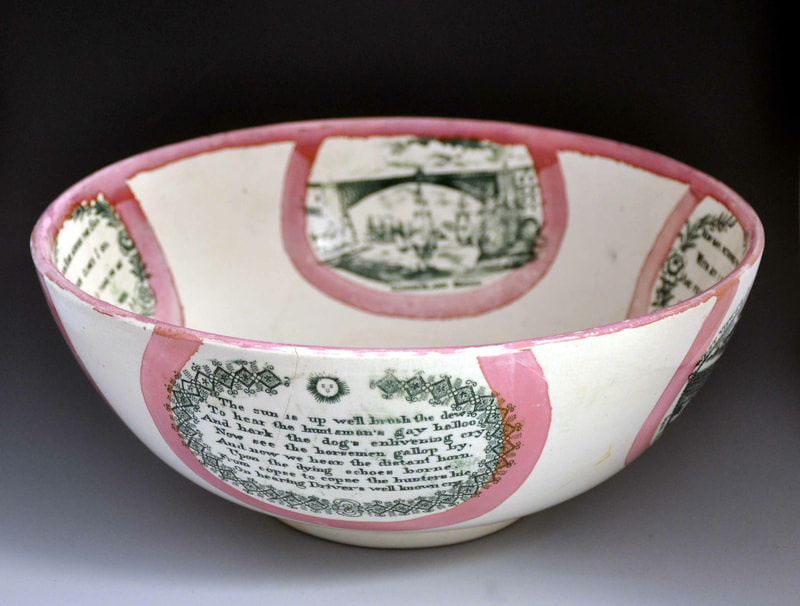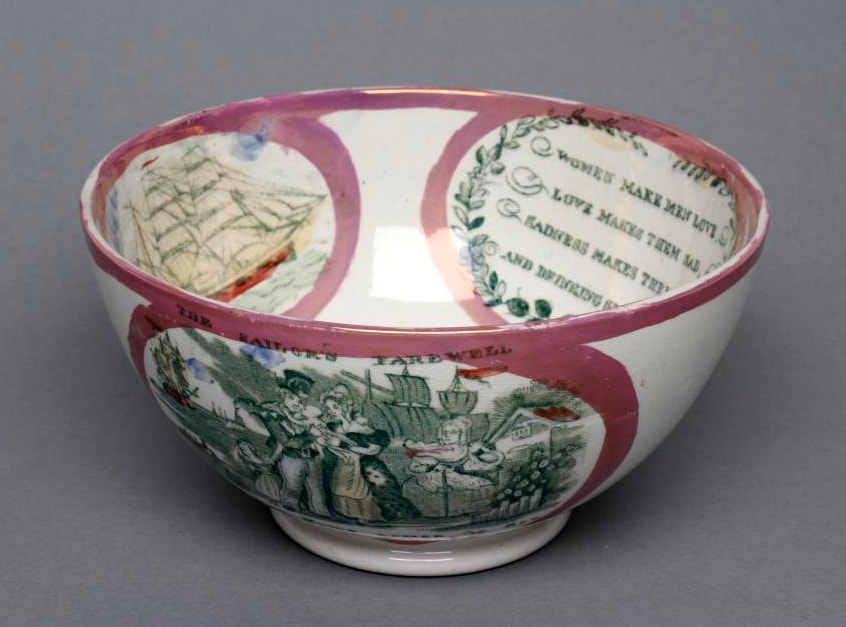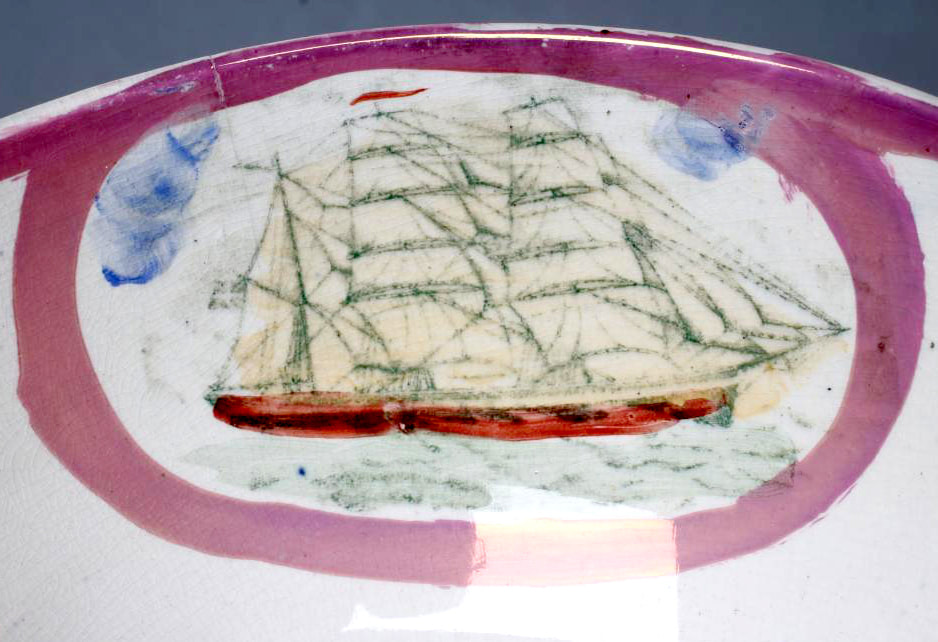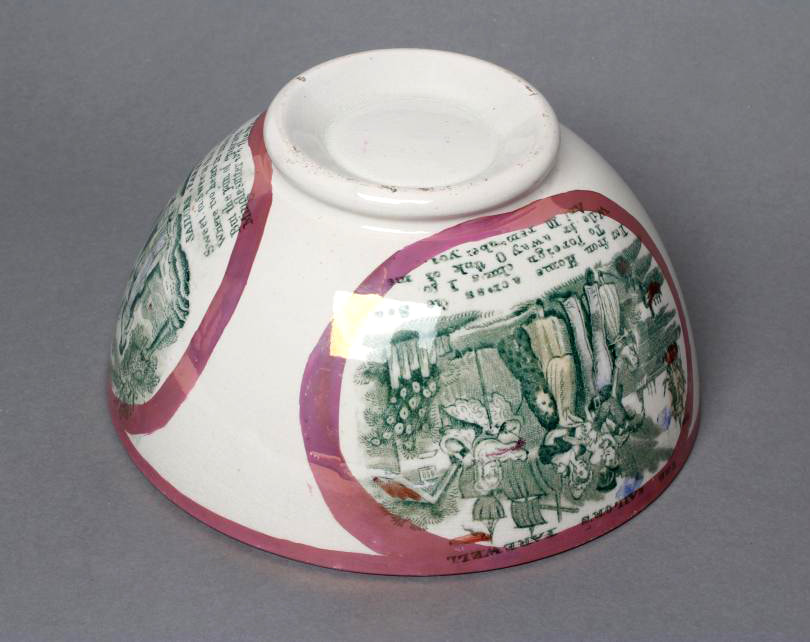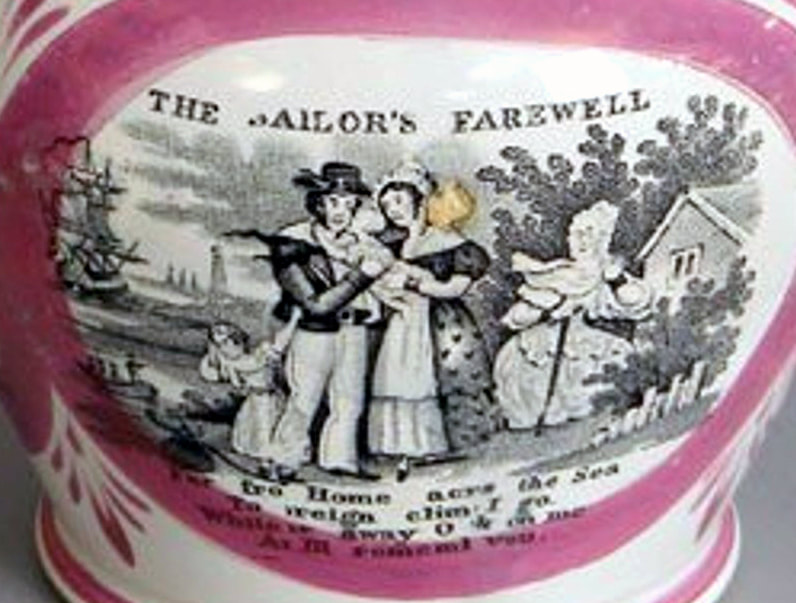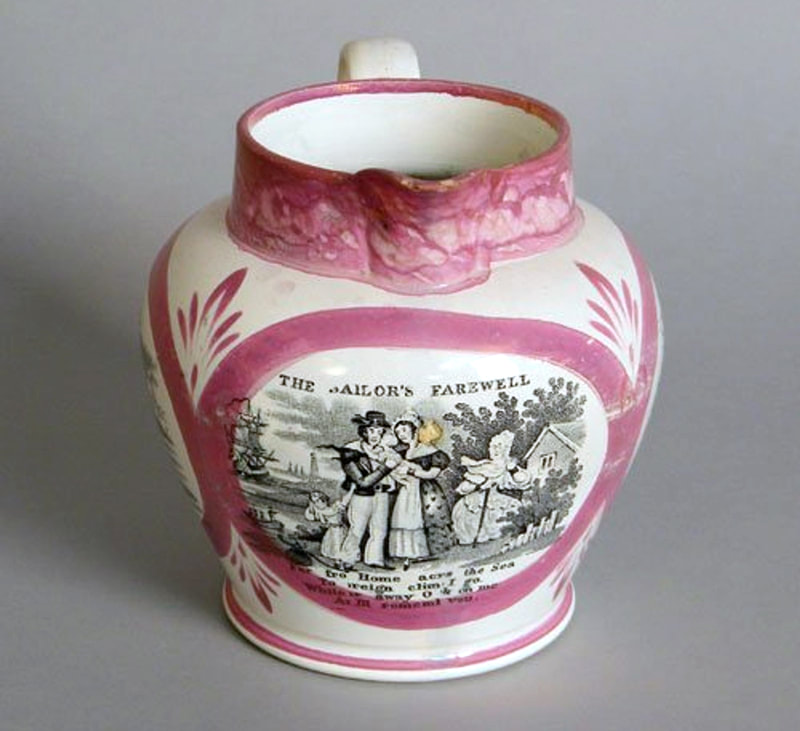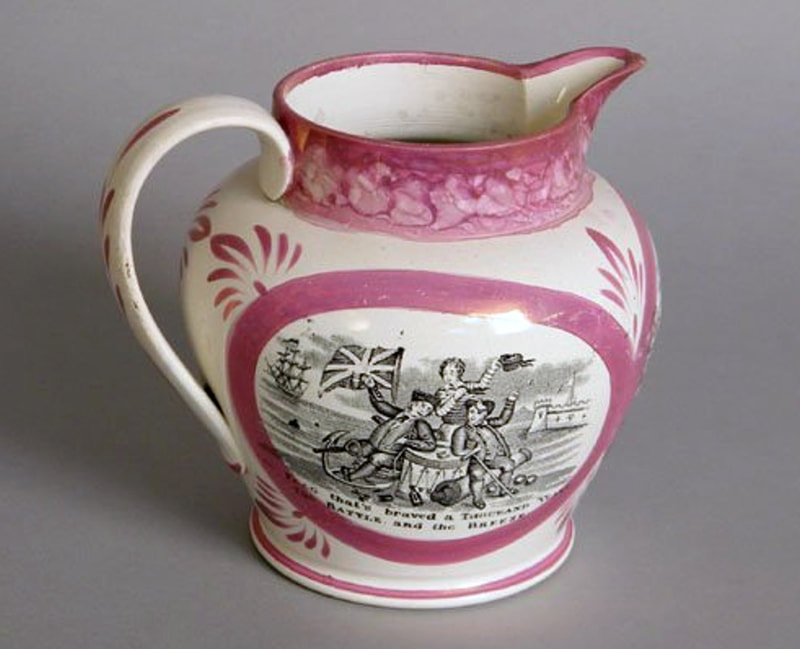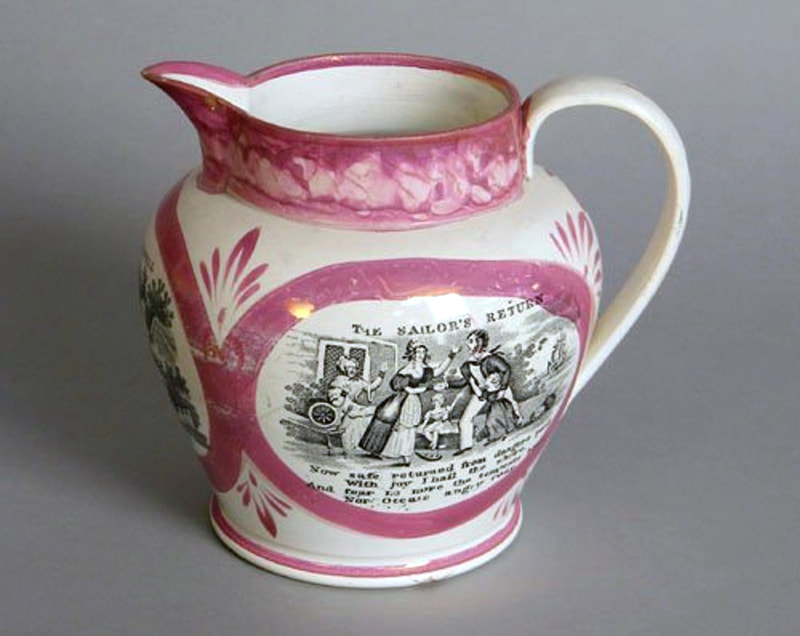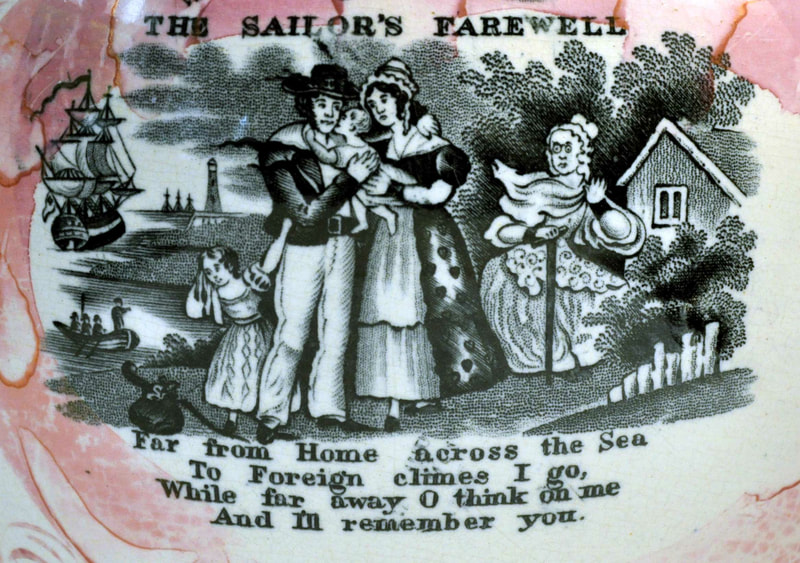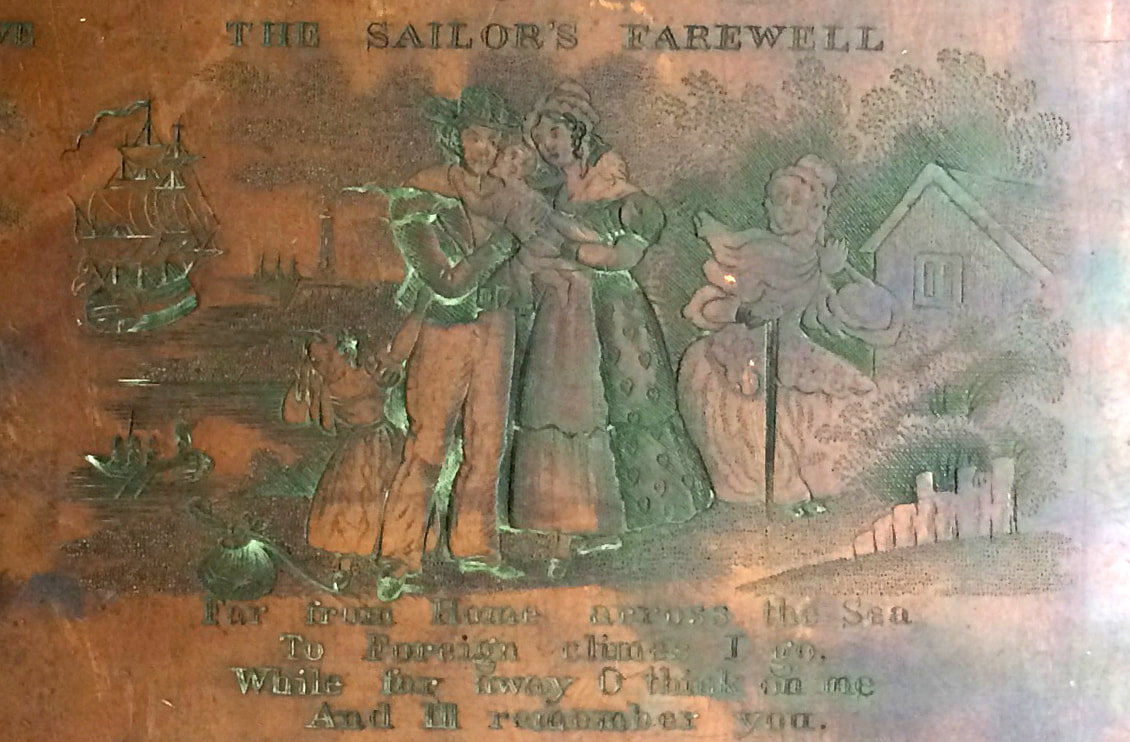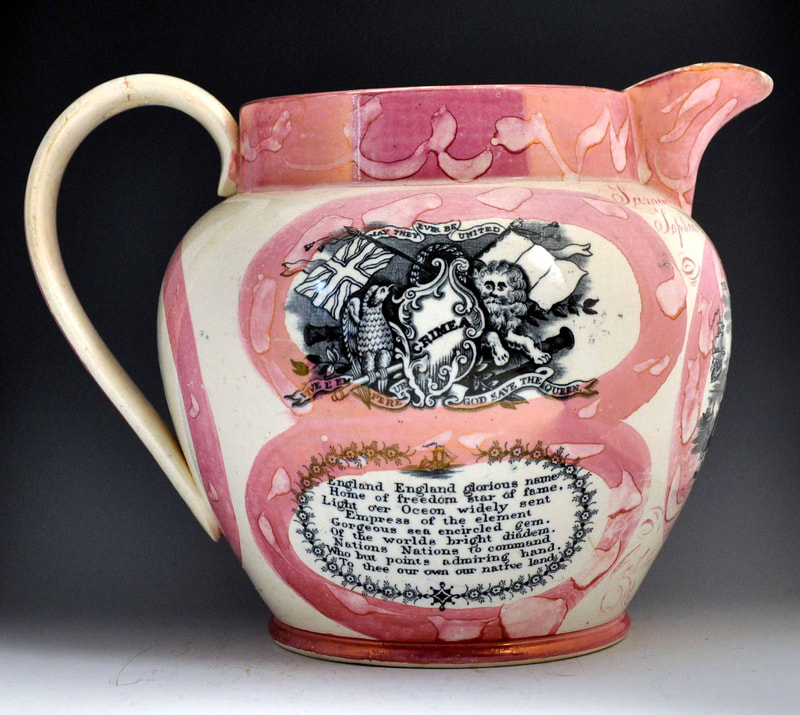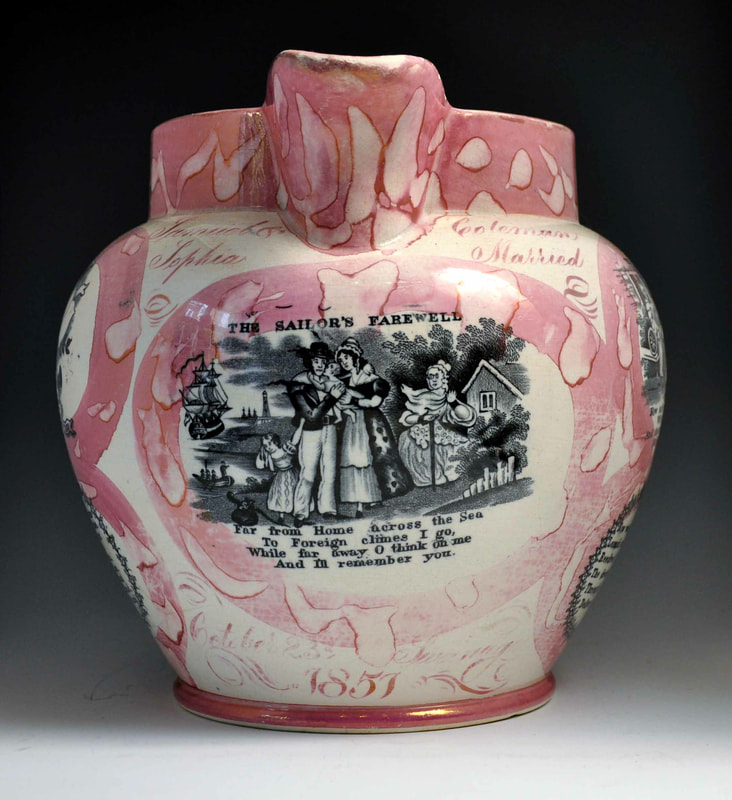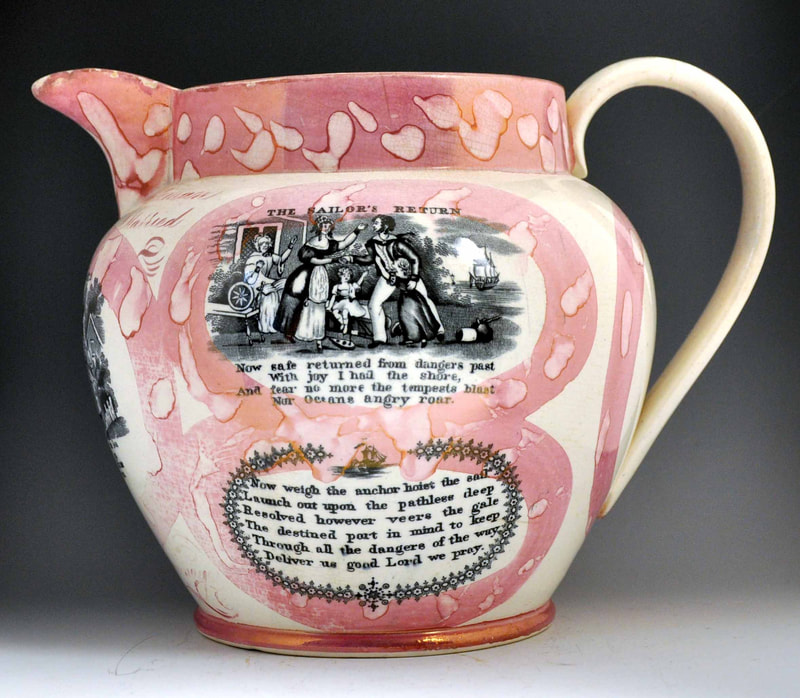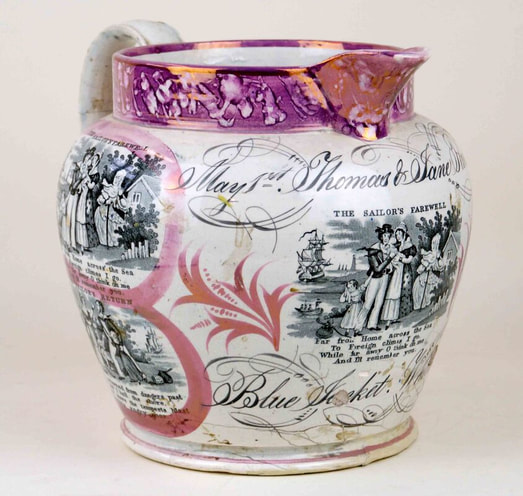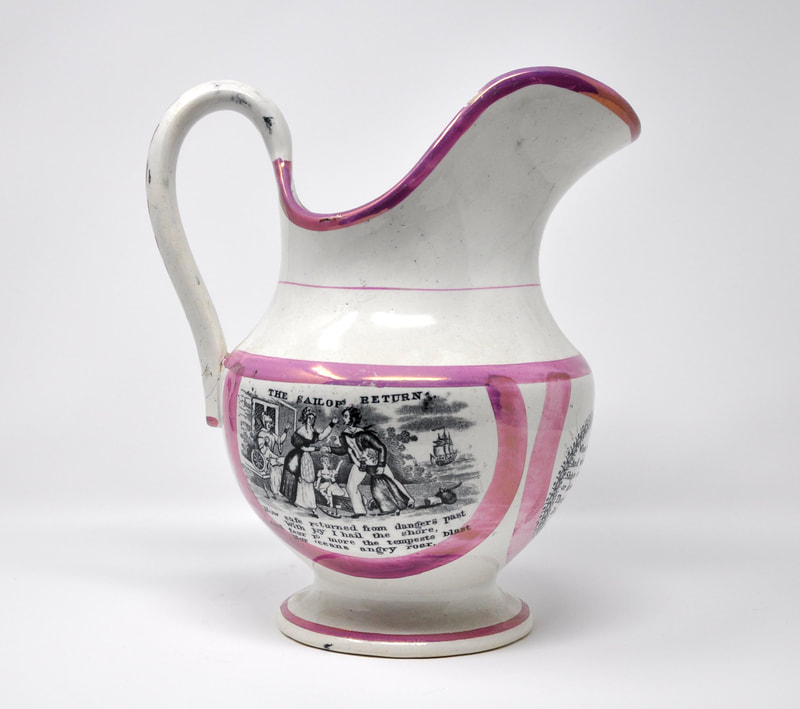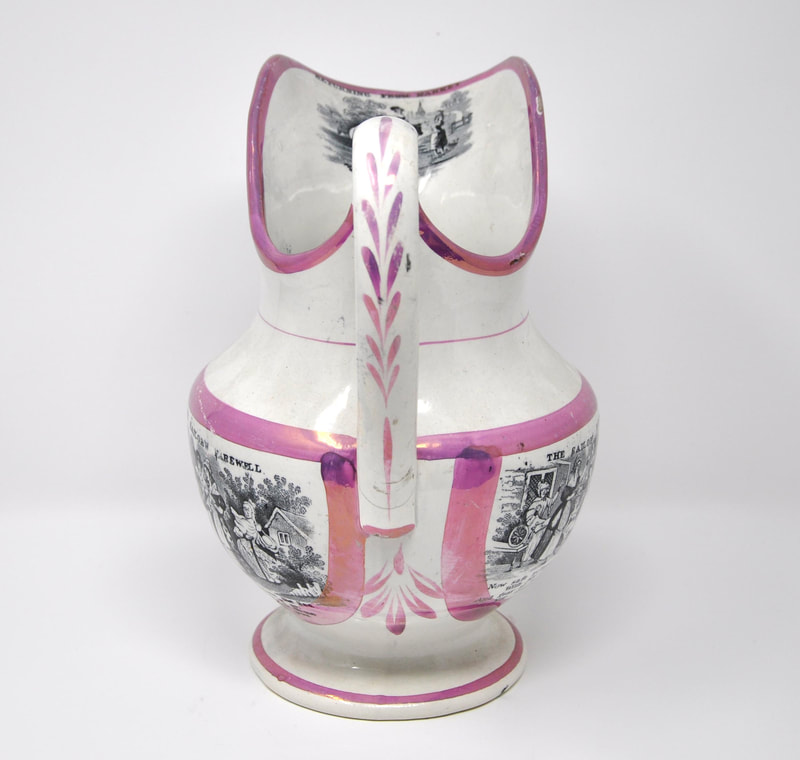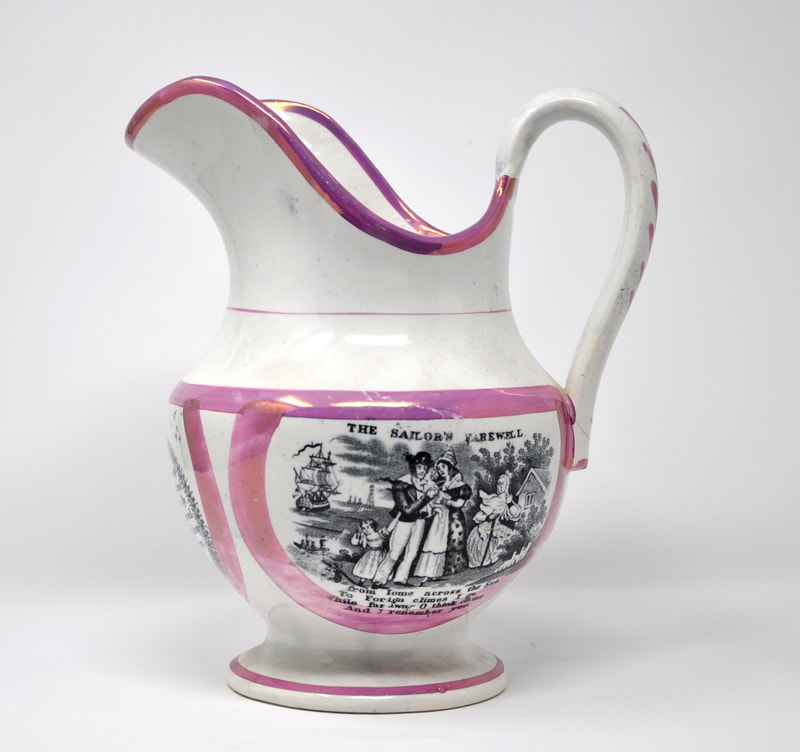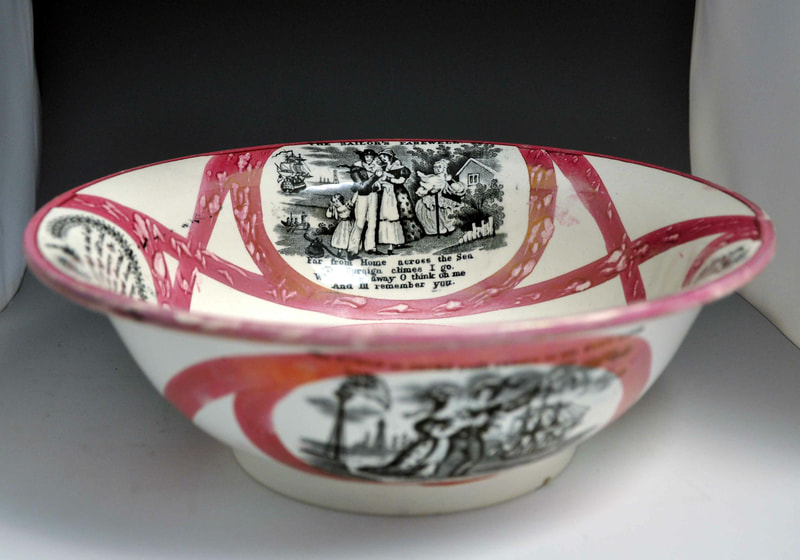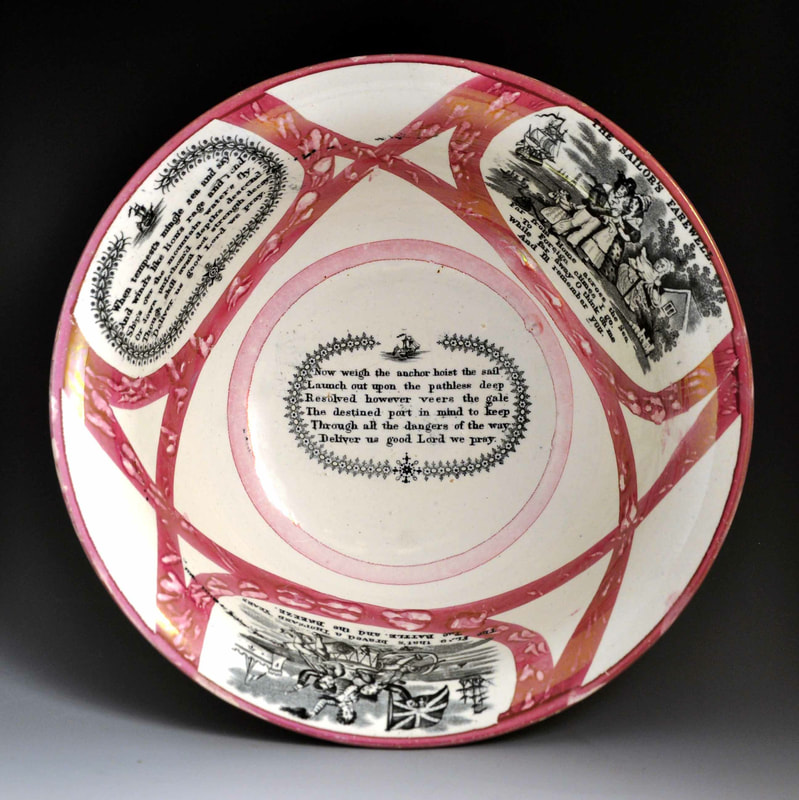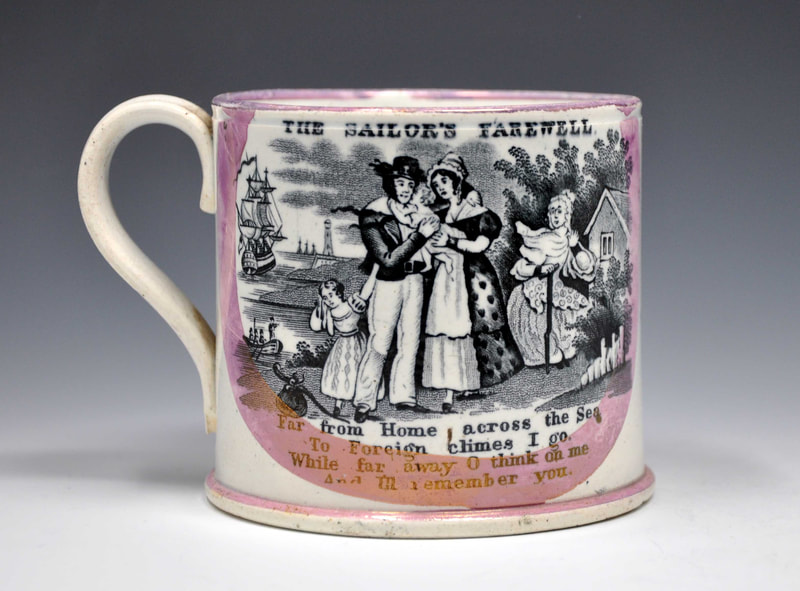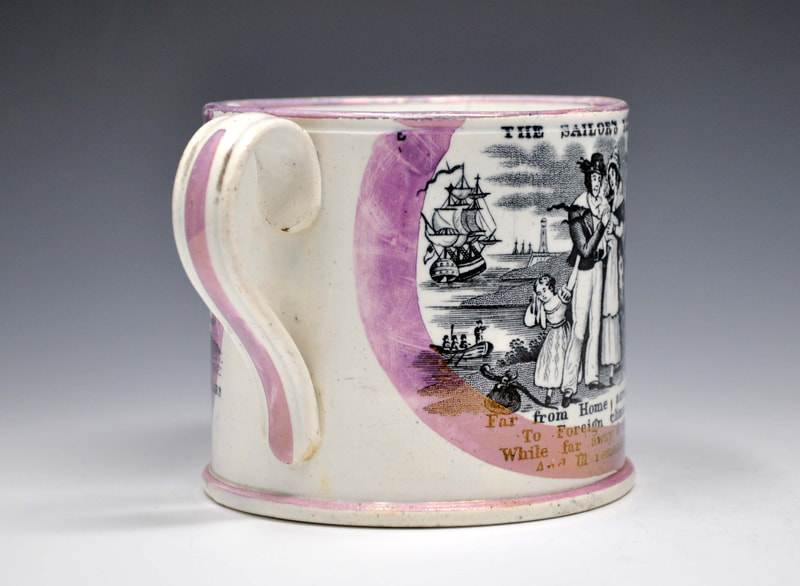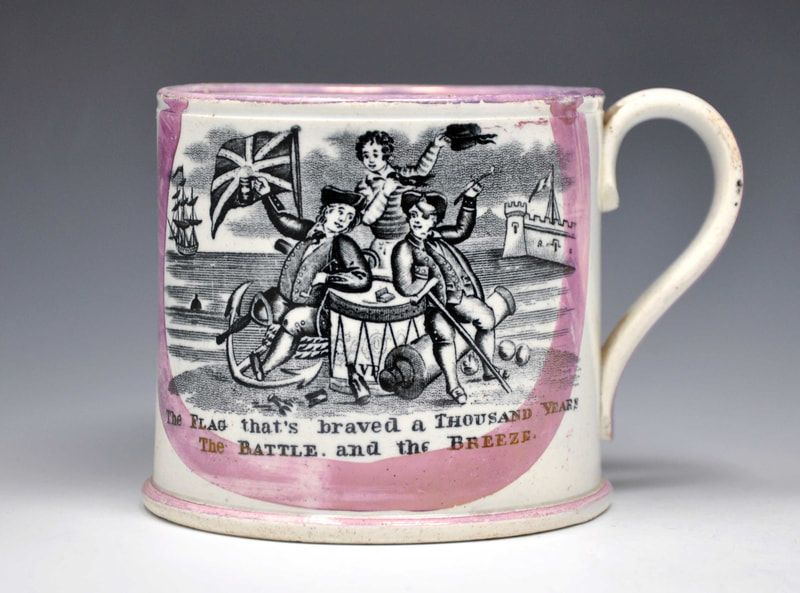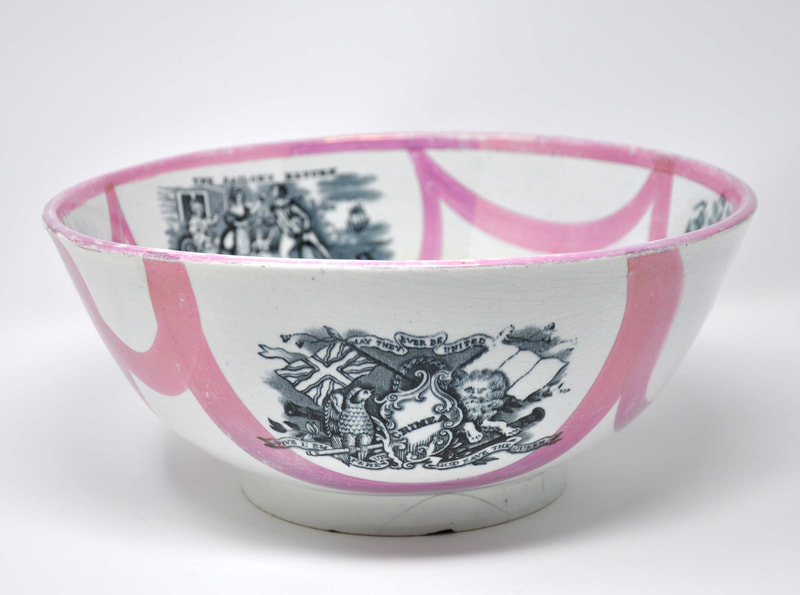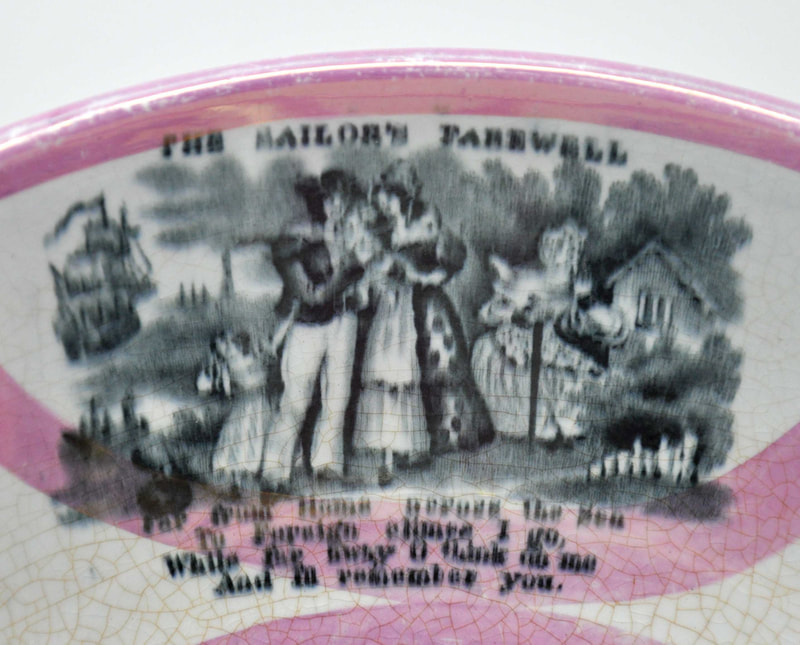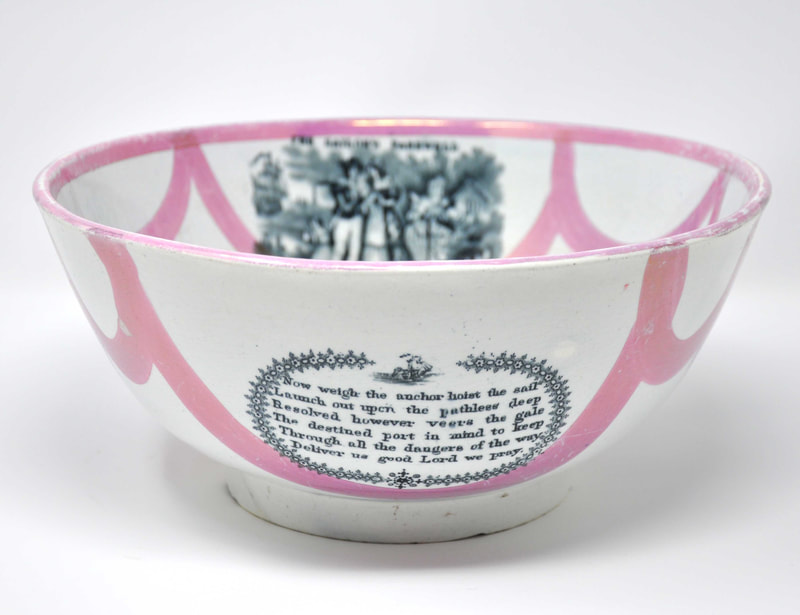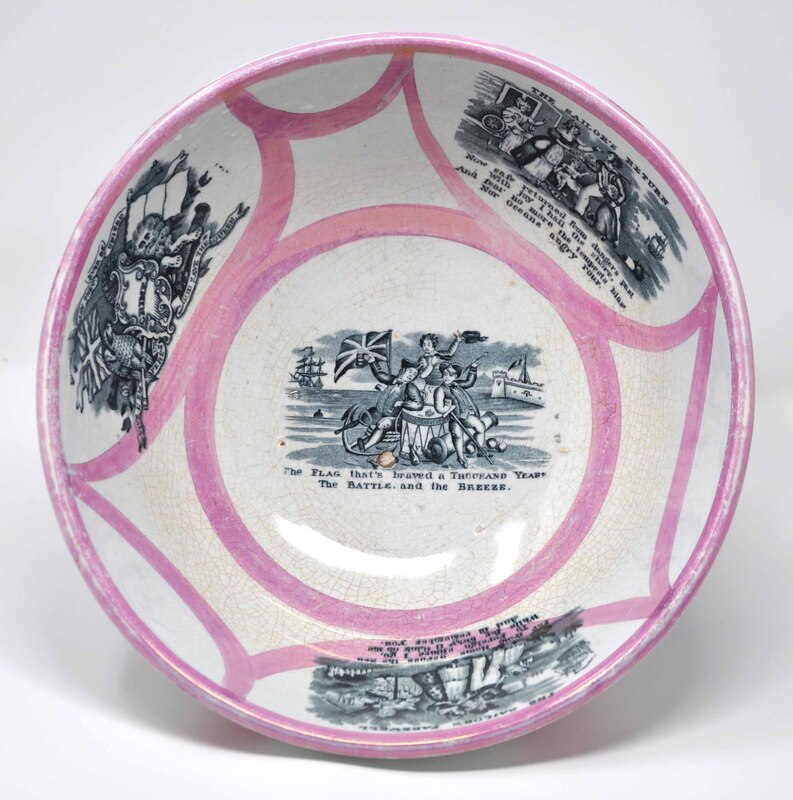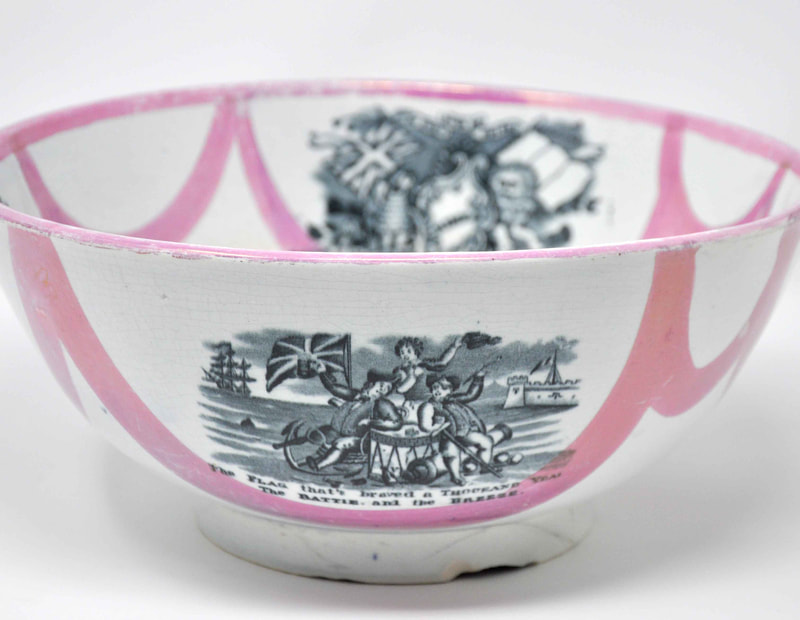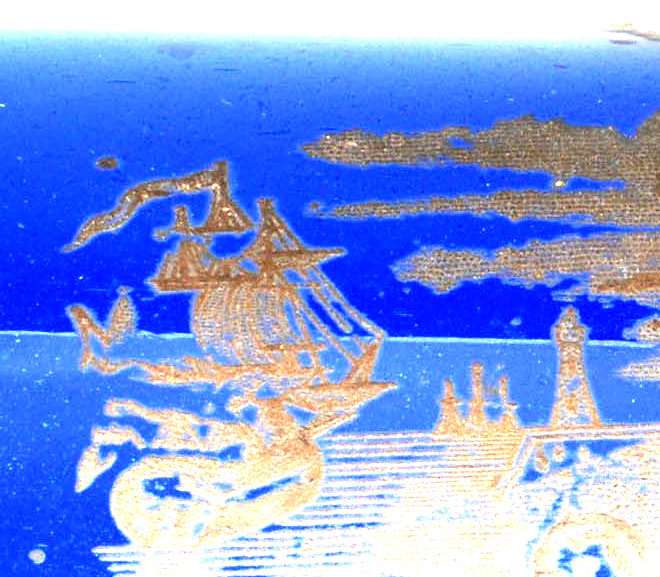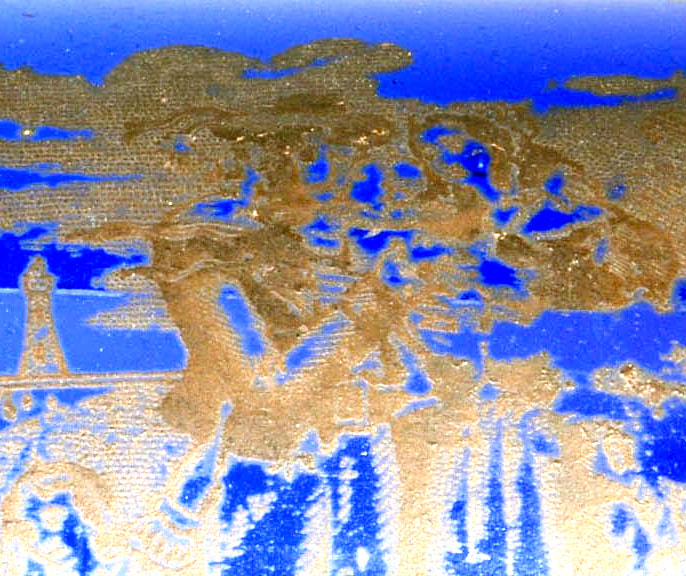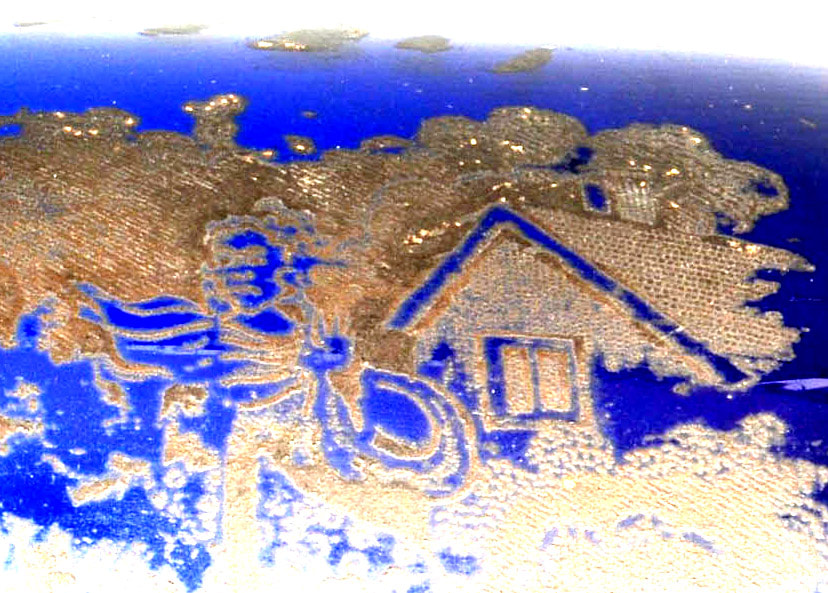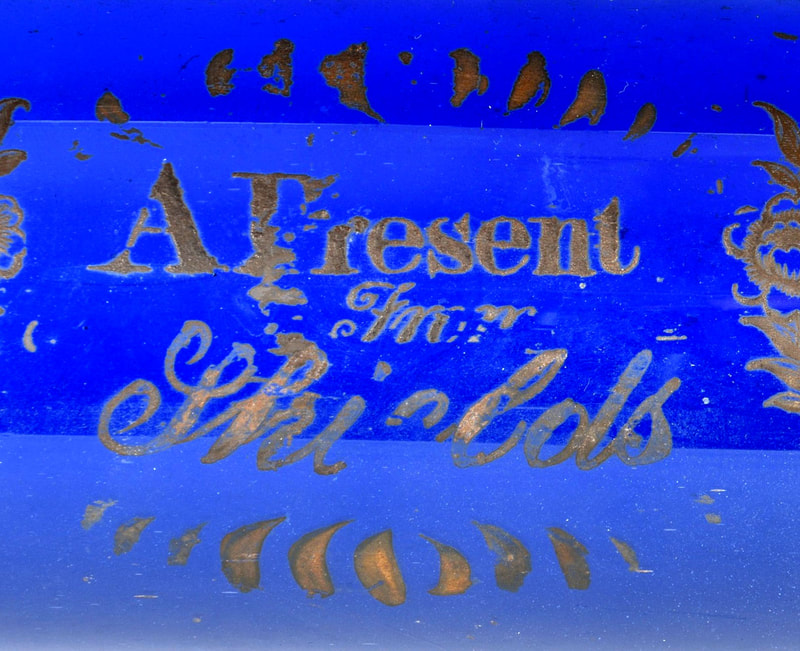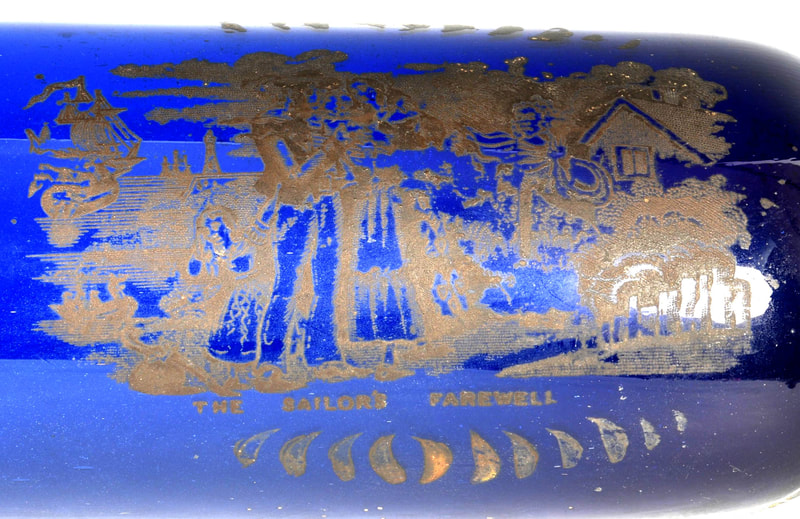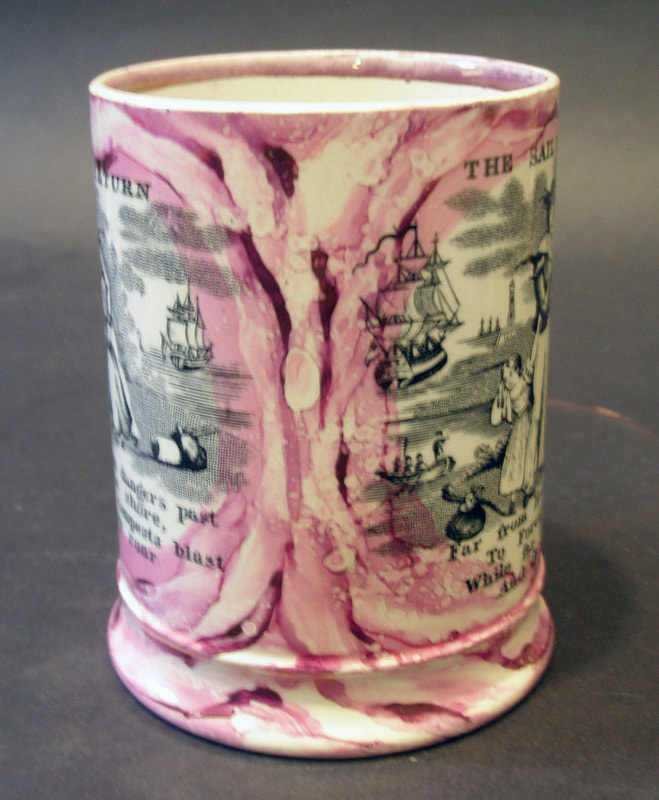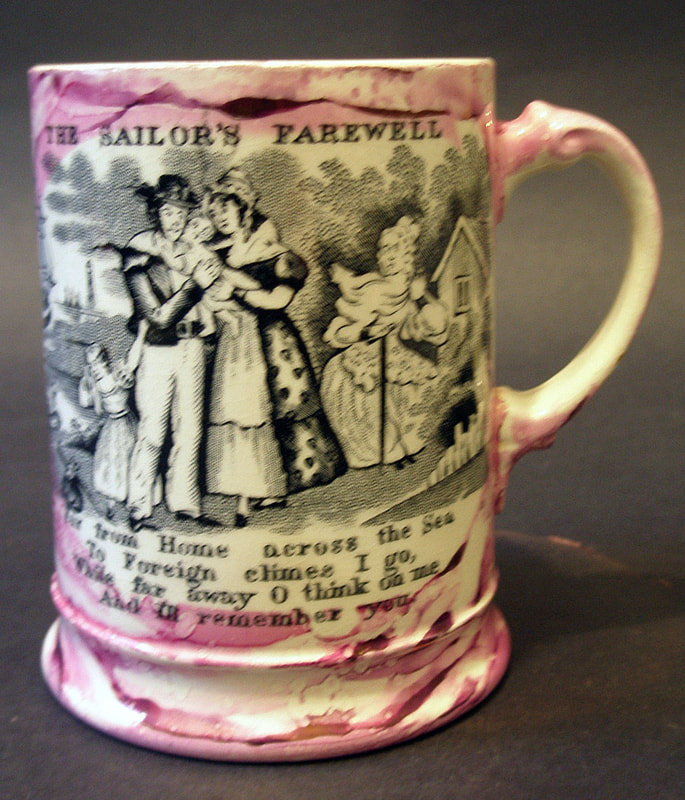Sailor's Farewell – Sunderland
See the Flag That's Braved page for an overview of this series of transfers.
Moore & Co, Wear Pottery, Sunderland
The plaques, mugs and jugs with the transfer are always unmarked, however, the jug below has an inscription typical of Moore's Pottery. The heavily lustred collar is also a feature of Moore's.
Here the transfer is paired with Robert Burns, which is unique to Moore's Pottery. Note that the transfers on the jugs above and below are printed in brown.
Below, a marked Moore bowl with the transfer, coupled with another commemorating the Crimean war, c1855. The diagonal zig-zag lustre decoration is typical of Moore's.
A more unusual bowl, raised on a pedestal, with the transfer, and an impressed mark for Moore & Co, and a frog mug with similar lustre decoration.
Scott of Southwick, Sunderland – plate 1
This jug has transferred flower decoration typical of Scott's Pottery. The obliterated mark under the bridge transfer suggests a date after 1841, when the partnership changed to Scott Brothers & Co.
Scott of Southwick, Sunderland – plate 2
This version of the transfer is tantalisingly close to that on a copper plate in the Sunderland Museum & Winter Gardens, Tyne & Wear Archives & Museums collection (see Ball's Deptford Pottery below). Note the vertical shaded lines that appear under the sailor's feet in the left and centre details. They don't appear on the items above (right detail). Also, the shading of the foliage to the left of the weeping child is a better match for the copper plate. However, in the left and right details (the 'Scott transfers), the left rower in the boat has his oar raised. There's no trace of that on Ball's copper plate.
The bowls above and below are from the Crimean period, c1855. The wavy lustre decoration is typical of Scott's.
A wash ewer, bowl and jug also from the Crimean period.
An eel pot or butter dish with this version of the transfer and typical Scott flower decoration to lid.
Moore's Wear Pottery or Scott of Southwick and Ball's Deptford Pottery
A simplified version of the transfer, used after the mid 1860s when orange lustre became popular, on a plaque form associated with Scott's. However, Ball's Pottery also used this plaque form and continued to make lustre items until the turn of the 20th century. Note the similarity of enamelling to the Ball bowl at the end of this section.
The unmarked bowl below comes from a period (1860s–70s) when Moore's and Scott's shared transfers. Records show that Scott's provided Moore's Pottery with 'blanks' for decoration.
Two mugs with similar enamels. The wavy orange lustre decoration on the first is similar to the bowl above.
The bowl and jug below are likely Ball's. The bowl has similar enamelling to the plaque above.
Ball's Deptford Pottery
Many of Scott's transfer plates were bought up by Ball's Deptford Pottery, which continued to make pink-lustre items like this into the 20th century. This is the transfer above paired with Scott transfers from the 1840s with the obliterated Scott & Sons printed marks.
Ball's Deptford Pottery
The copper plate for this version of the transfer was donated by the Ball family to the collection of Sunderland Museum & Winter Gardens, Tyne & Wear Archives & Museums.
A smaller bowl with highlights of coloured enamels over the transfers.
Sailor's Farewell – Tyneside
Unidentified Tyne pottery
The decoration on this jug has decorative elements that are very similar to those used by Carr and Patton in North Shields c1840s. However, the short spout is perhaps more typical of the Newcastle Pottery.
The other transfers on the jug shown below.
C T Maling, Ouseburn Bridge Pottery, Newcastle
The Maling copper plate (below right) now resides in the collection of the Laing Art Gallery, Newcastle upon Tyne (Tyne & Wear Archives & Museums). See here for an image of the other transfers on the copper plate.
Below a large marriage jug with the inscription 1857.
Below, another very large marriage jug with the transfer.
A wash ewer and basin with the impressed mark 'C.T. MALING'.
A typically unmarked mug with the transfer.
An unmarked punch bowl with the transfer and a more unusual pattern of lustre decoration.
Unknown Tyne manufactory
This version appears on a blue Tyne rolling pin, printed in gold, and marked 'A Present from Shields'. It is similar to the Moore/Scott/Ball version, shown in the last image below, with just the title 'The Sailor's Farewell' and no verse. However, note that on the rolling pin there is a light house, on the horizon, to the left of the figures.
20th century Maling reproduction
The mug below, made in the mid 20th century, could be mistaken for an original. The transfers come from the CT Maling copper plate. However, the moulded handle and the way the pink lustre is applied, give it away as a reproduction. The pink lustre lacks the iridescence of 19th century items. Maling marked some, but not all, of these later items with their castle mark.
